NADmagNADmag

1 NADmag | Fall 2021
Fall 2021 | Volume 21, Issue 2
A Publication of the National Association of the Deaf
Feature article p. 23
ABOUT THE ©2021, is published by the NAD (USA), and is sent as a national membership benefit.
For membership information, contact Member/Donor Relations at nad.info@nad.org or complete the contact form at: www.nad.org/contactus
Subscriptions: Libraries, schools, and similar institutions may subscribe to NADmag. For more information, complete the contact form at www.nad. org/contactus
Requests for Permission: Materials in this publication may not be reproduced in any form without written permission. Complete the contact form at www.nad. org/contactus or email nad.info@nad.org
Advertise in NADmag: For more information, go to www.nad.org/ advertise or email nad.info@nad.org
Publication of an advertisement in the NADmag does not imply NAD endorsement of a product or service. The NADmag is not responsible for advertisement contents. The National Association of the Deaf and the NADmag do not endorse or recommend any article, product, service, opinion, advice, statement, or other information or content expressed by third party authors. The views and opinions of such third party authors who have submitted articles to the NADmag belong to them and do not reflect the views of the National Association of the Deaf.
ABOUT THE NAD
The National Association of the Deaf (NAD) was established in 1880 by deaf leaders who believed in the right of the American deaf community to use sign language, to congregate on issues important to them, and to have its interests represented at the national level. These beliefs remain true to this day, with American Sign Language as a core value. As a nonprofit federation, the mission of the NAD is to preserve, protect, and promote the civil, human, and linguistic rights of deaf and hard of hearing individuals in the United States of America. The advocacy scope of the NAD is broad, covering the breadth of a lifetime and impacting future generations in the areas of early intervention, education, employment, health care, technology, telecommunications, youth leadership, and more.
For more information, visit www.nad.org
ABOUT DESCRIBED & CAPTIONED
NATIONAL ASSOCIATION OF THE DEAF 8630 Fenton Street, Ste. 820, Silver Spring MD 20910 301.587.1788 / 301.587.1789 TTY nad.info@nad.org / CFC Number: 10356
MISSION STATEMENT
To preserve, protect, and promote the civil, human, and linguistic rights of deaf and hard of hearing individuals in the United States of America.
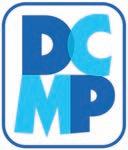
CONTACT / LEARN MORE
To contact the Board of Directors, complete the contact form at nad.org/contactus. For information about the Board, visit nad.org/board
2
Guests Arial Baker-Gibbs Chanel Gleicher Bonheyo Sean Forbes Howard A. Rosenblum, NAD CEO Lizzie Sorkin Marlene Valle
MEDIA
and Captioned Media Program
Education
EDITORIAL TEAM Publisher NAD Chief Executive Officer Howard A. Rosenblum Editor in Chief Lizzie Sorkin Editor Anita Farb Advertising / Sales Donna Morris Desktop Publishing Jill O’Leske, Graphic Designer impactdesign.biz President Melissa Draganac-Hawk Vice President Amy Gomme Secretary Jenny Buechner Treasurer Michelle Cline Appointed Members Stephanie Hakulin Kirsten Poston Region I Jacob Leffler Milmaglyn Morales Region II Linsay Darnall, Jr. Kevin Ryan Region III Lisa Rose Region IV James “Dino” Christianson Laura Kim Affiliates Justin Cha Tyese Wright THE
PROGRAM Described
1447 E. Main Street, Spartanburg, SC 29307 800.237.6213 / 800.237.6819 TTY 800.538.5636 F info@dcmp.org / www.dcmp.org The DCMP is funded by the U.S. Department of
and administered by the NAD.
BOARD
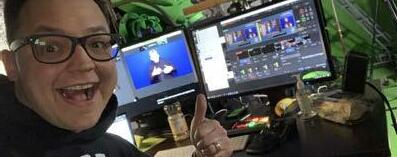


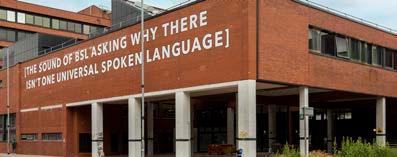
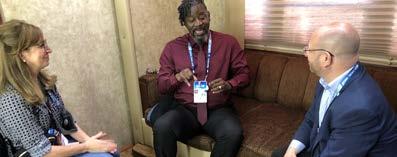
3 NADmag | Fall 2021 RECURRING FEATURES From the President // Melissa Draganac-Hawk From the CEO // Howard A. Rosenblum School Spotlight // California School for the Deaf, Fremont Deaf Culture Today // Lizzie Sorkin Donor List In Memoriam 5 7 10 11 35 39 Why It is Important to have an Appropriate Interpreter for an Assignment? Sean Forbes Deaf Creators and Influencers to Support Marlene Valle Playing With Patterns of Power Ariel Baker-Gibbs ASL Everywhere: An Interview with Wawa and Alexis Howard A. Rosenblum, NAD CEO Jr. NAD: Looking Back 60 Years Chanel Gleicher Bonheyo 14 18 23 27 30 23 27 5 7 14
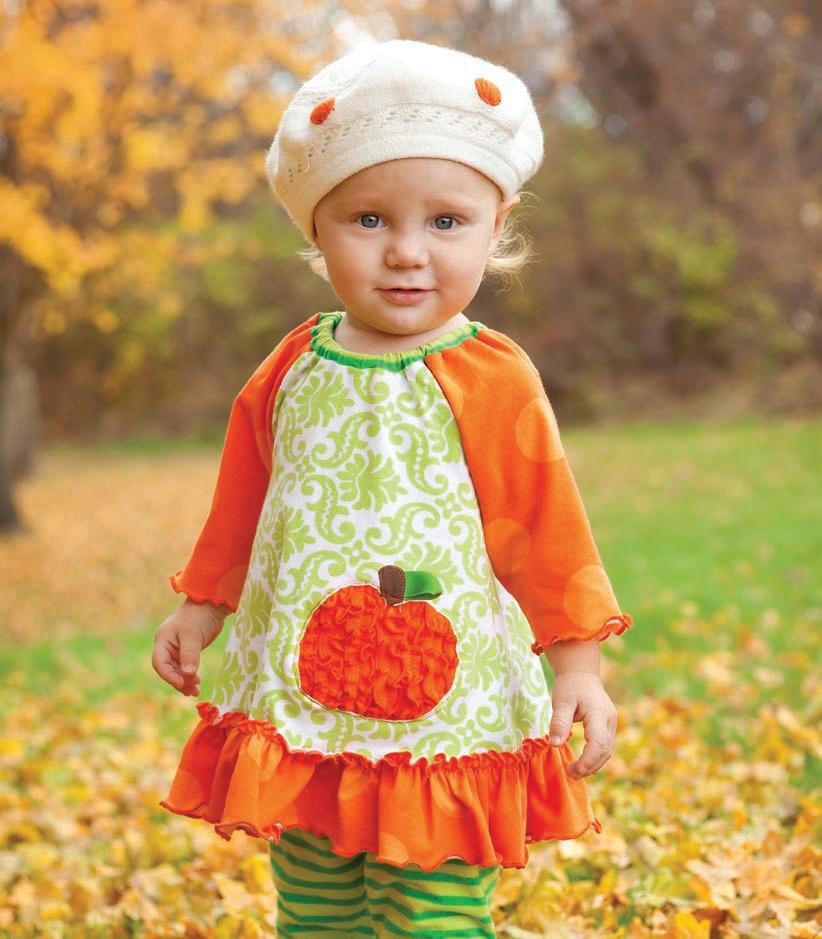





4 CONNECTING MADE EASY Whether it’s voice or text, from across the street or across the country, you can rely on Ultratec technology to keep you connected. www.ultratec.com 1-800-482-2424 (V/TTY) service@ultratec.com All your telephone needs: TTYs & captioned telephones CAPTEL ® CAPTIONED TELEPHONES THAT FIT YOUR LIFESTYLE . FEDERAL LAW PROHIBITS ANYONE BUT REGISTERED USERS WITH HEARING LOSS FROM USING INTERNET PROTOCOL (IP) CAPTIONED TELEPHONES WITH THE CAPTIONS TURNED ON. IP Captioned Telephone Service may use a live operator. The operator generates captions of what the other party to the call says. These captions are then sent to your phone. There is a cost for each minute of captions generated, paid from a federally administered fund. No cost is passed on to the CapTel user for using the service. CapTel captioning service is intended exclusively for individuals with hearing loss. CapTel® is a registered trademark of Ultratec, Inc. The Bluetooth® word mark and logos are registered trademarks owned by Bluetooth SIG, Inc. and any use of such marks by Ultratec, Inc. is under license. (v2.6 10-19) CapTel 2400i includes Bluetooth® wireless technology Low Vision Model CapTel 880i
Our Language Acquisition Journeys Impact All of Us
BY MELISSA DRAGANAC-HAWK
All of us have our own journey in how we acquire language. We have shared and heard many stories from our community members about how they learned language through families, schools, services, and friends. I studied Linguistics in college and am really passionate about ensuring all deaf children have access to language at an early age. In my observations as a person involved in the deaf education system, it is clear that there are a lot of misconceptions about access to language and the impact of language deprivation. Too many parents and educators do not realize that language deprivation during the critical years of 0 to 5 years has a devastating impact on a deaf child’s development and life.
This impact goes beyond communication. Language deprivation also affects a child’s physical, cognitive, and social emotional development. One example
of an aspect of cognitive development that is hampered if a child has no access to language is “Executive Function.” This is a very important area of development for a child, and such a function includes important skills that need to be developed such as attention span, working memory, and thinking ahead. If a child does not develop these skills, the child’s learning is harmed in a way that is ultimately observable not only in academic subjects such as math and science, but also other skills such as being able to make conversation and think of new ideas. Early access to language allows a child to learn how to communicate with others, share their feelings about something, ask others for help, express their ideas and opinions, and connect with others. Delayed access to language is language deprivation. And such damage often leads to Language Deprivation Syndrome (LDS). LDS is known to cause cognitive delays and mental health difficulties

5 NADmag | Fall 2021
THE PRESIDENT
FROM
Melissa begins the NAD Board meeting at the NAD Headquarters in January 2022.
FROM THE PRESIDENT
over one’s lifespan. People who have LDS often cannot participate in the workforce; interact meaningfully even with other sign language users; understand their rights; plan for the future; identify with role models, or know their family history and values.
By contrast, deaf children who are exposed to sign language from birth or an early age, between 2 and 3 years old, should be able to demonstrate 150 sign-words or more, fingerspell their own name, and understand the timeline (such as“today” and “tomorrow”). A deaf child who is between 4 and 5 years old should be able to use complex sentence structures, count up to 15, and use verb modification such as walk-short or walk-long, and cry or brawl. And it is also important for the deaf child to continue to learn languages through families or/and school. These language milestones apply to hearing children who learn spoken language, and should apply equally to deaf children learning sign language.
Language deprivation is the biggest epidemic affecting deaf children. The Deaf Community and our allies must work together to eradicate language deprivation. We MUST work against the false notion that parents need to choose a single language or communication method for their deaf infants and young children. Sign language is not a last resort after other methods fail, which is often the way many families come to discover sign language. Waiting until failure in the child’s language development to start using sign language is often too late and is language deprivation for that child. Sign language is visually accessible and therefore natural for every deaf child. We must hold all stakeholders accountable for ensuring that each and every deaf child has full access to all forms of language.
We must change the narrative that too many parents get from the medical community. That their deaf child is broken and must be fixed through medical procedures and learning how to hear and speak. Too often these parents and educators fail to recognize that the child is not disabled by being deaf but rather is disabled by their refusal to provide them with visual access to language resulting in LDS. We must intervene and convince every parent who learns that their child is deaf that the greater danger is language deprivation and to provide sign language to their child so that they can succeed.
The Deaf Community has developed a beautiful and rich culture of sign language to which we continue to add and enhance. The articles in this issue of NADmag gives you a glimpse of the history and growth of sign language. You will notice that direct access to language is seen and celebrated as milestones within the Deaf Community: the White House, Super Bowls, NAD announcements, and employees who use sign language at coffee shops, food stores, and other commercial venues.
NADly yours, Melissa S. Draganac-Hawk
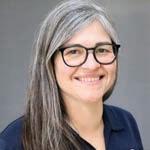
6
Melissa Draganac-Hawk has been on the NAD Board of Directors since 2008 and now serves as President for 2020-2022.
We must change the narrative that too many parents get from the medical community. That their deaf child is broken and must be fixed through medical procedures and learning how to hear and speak.
ENGAGING FOR EQUALITY: A New Era of Sign Language Rights
BY HOWARD A. ROSENBLUM
Deaf people and their efforts to use sign language have been oppressed since the beginning of time. The use of sign language in deaf education is still sporadic worldwide and is relatively recent, having only spread about two centuries ago. Recent decades have brought about the academic analysis and documentation that sign languages are true and full-fledged languages equal to spoken languages, official recognition of sign languages in various countries, and legal mandates for the provision of sign language interpreters as well as sign language in education. The past several years have brought about the powerful visibility of sign language in many aspects of life.
Here in the United States, the first schools for the deaf began slightly more than two hundred years ago. This led directly to the 1865 founding of a college for the deaf that would later be named Gallaudet University. The National Association of the Deaf was founded in 1880 with the intent to protect the rights of deaf people including their right to sign language. Different forms of sign language were in use in this country during this time, including American Sign Language (ASL), Black American Sign Language (BASL), Hawaiian Sign Language (HSL), sign languages used by different Native American tribes, Lengua de Señas Mexicana (LSM), and more.

7 NADmag | Fall 2021
Howard works away at his desk at the NAD Headquarters.
FROM THE CEO
FROM THE CEO
The movement to elevate the status of sign languages as true languages largely began when Dr. William Stokoe published a monograph in 1960 proving the validity of sign languages by showing they have formal structures equal to spoken languages. Since then, numerous universities throughout the world created classes to teach sign languages and promote the formal study of these sign languages. A recent survey shows that ASL is the fourth most studied language aside from English in universities in the United States. Moreover, many countries now recognize their native sign languages as part of their official languages. While the United States does not officially recognize any language, spoken or signed, several federal laws have mandated the provision of sign language access.
The Rehabilitation Act of 1973 required federal government agencies and federally funded entities to provide sign language access in their employment, programs, and services. The Americans with Disabilities Act of 1990 (ADA) expanded the right to sign language access to nearly every part of society including but not limited to employment, state and local government services, and services within private companies. Additionally, the ADA created the concept of a federally supervised telecommunications relay service that gave rise to Video Relay Services (VRS). These laws have led to many successful lawsuits against hospitals and doctors, courts and lawyers, law enforcement and prisons, universities and schools, museums and theaters, and many others for failure to provide sign language access.
In recent years, sign language has become far more visible than ever. We have come a long way since the 1910 movie produced by the NAD, “Preservation of Sign Language” signed by George Veditz. Since then there have been several blockbuster movies highlighting sign language, as well as many
television shows that have portrayed signing deaf actors in a multitude of roles. These deaf actors have helped society realize that deaf people truly can do anything. Recently, major corporations such as Amazon, Facebook, Google, Marriott and Microsoft have created and highly promoted commercials involving signing deaf people. Since 1992, the National Football League (NFL) has included ASL signers to perform the National Anthem and America the Beautiful at their Super Bowls and has worked with the NAD since 2009 to bring in Deaf Talent for these performances which reach millions of viewers every year.
The devastating impact of the COVID-19 pandemic have led many state governors to host frequent press briefings, and with pressure (and some lawsuits!) from the deaf community, all of them have provided sign language interpreters for those briefings. Similarly, community pressure and a NAD lawsuit compelled the U.S. White House under the Trump Administration to provide sign language interpreters for their COVID-19 press briefings. The Biden White House has taken this cue to provide sign language interpreters for their daily press briefings instead of just those that focus on the pandemic. Moreover, the Biden Inauguration was entirely livestreamed with deaf interpreters providing sign language access, and also featured on national television the signing of the Pledge of Allegiance by firefighter Andrea Hall.
Even with all this progress for sign language access, the battle for equality and equity for deaf and hard of hearing people is not over. Too many of us have experienced denial of sign language access in every part of life. How many of us have been told by providers and government agencies the tired old phrase, “We do not provide sign language interpreters here,”? How many of us have been denied jobs because the employer does not think a signing
8
A recent survey shows that ASL is the fourth most studied language aside from English in universities in the United States.
deaf person can perform the job as well as a hearing person? These and many other injustices persist which compel us to continue our collective efforts for advocacy to promote sign language rights for deaf and hard of hearing people everywhere. Nevertheless, our community can and should celebrate the vastly increased visibility of sign language, which shows that all our work has made a powerful impact on society towards full acceptance of sign languages.


9 NADmag | Fall 2021
FROM THE CEO
ORLANDO 56th BIENNIAL CONFERENCE June 30 – July 4, 2022
Howard A. Rosenblum, Esq. has served as the NAD Chief Executive Officer since 2011.
SCHOOL SPOTLIGHT


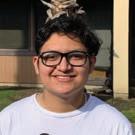
What do you think about seeing ASL or Deaf people in a commercial, movie, or TV show?
CALIFORNIA SCHOOL FOR THE DEAF, FREMONT
It makes me feel proud when I see Deaf actors on TV.
I can understand what was said in ASL when I see Deaf people in a movie or TV show. I don’t understand what was said when hearing people are talking, too.
4th grade
I enjoy watching movies with Deaf people in them. I like that the movies have people like me.
5th grade
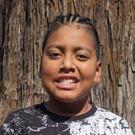
When I see deaf actors in commercial TV or movies, I thought that would benefit our community because it encourages more and more hearing parents to learn ASL to communicate with their deaf children. Also, it inspires hearing parents to send their children to CSD. That makes me happy and proud for deaf community. I hope more deaf people will have opportunities to be included in the future.
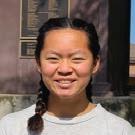
I think seeing deaf actors in movies is interesting and awesome. I would like to see more deaf actors in movies, TV shows, and commercials.

8th Grade
I think it’s very cool. Seeing deaf actors on screen made me enjoy it and want to be an actor in the future because it looks fun and interesting.
CRISTINA MABUYO 12th Grade Jr. NAD Member



For me, every time I see ASL or Deaf representation, I get really excited knowing that there are hearing people out there getting exposed about Deaf culture for the first time ever but that is quickly replaced with disappointment as the film industry tends to represent Deaf people inaccurately. If not, then Deaf people are often seen as someone who needs extra support not as independent individuals. I wish they would cast actual Deaf people in Deaf roles. However, I’m glad our community is getting recognized more than before!
It is a dream of mine to be in a big movie. So, to see them on screen, it inspires me to be on the screen one day.
There is nothing wrong with deaf people being involved in a commercial, movie or TV show. Deaf people are not, in any ways, below hearing people. Inability to hear shouldn’t stop them from doing what they love and what is wrong with them wanting to be an actor which roles are usually ‘only’ for hearing people? If they have the potential to act then leave it as that. We can be vocal through our hands and body language and I truly hope everyone is able to acknowledge us.
8th Grade
10
LUIS SANTIAGO VENTURA SOSA
DEVIKA KADU
JARETH LOPEZ
DESTINY WALLACE
ELYZA MILLER
Pre-Kindergarten
KEVEN MEDINA
10th Grade
CHANG-MAY TAN 11th Grade Jr. NAD Member
TYLER CARDOSO 12th Grade Jr. NAD Member
Q&A with Sara Nović
AN INTERVIEW BY LIZZIE SORKIN
I was immediately captivated and became a fan of Deaf author Sara Nović when I read her book Girl At War (Random House, 2015). In 2018, I connected with her on Twitter (@NovicSara) and since then have been closely following her.
In early August this year, Sara announced the upcoming publication of her new book True Biz (coming March 2022), which follows a Deaf teenage girl navigating her journey as a new student at a school for the deaf. Personally, I appreciate deaf storylines written by deaf writers; it feels somewhat familiar and comforting to read something I understand and have experience with. Representation matters. And, it gets better – Millicent ‘Millie’ Simmonds (Wonderstruck, 2017 and A Quiet Place, 2018) will star in the TV adaptation of the book!

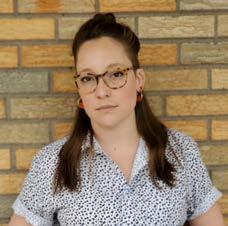
I reached out to Sara and invited her to share her writing process, thoughts about representation, and what her favorite pen is.
You are a Deaf rights activist. How do you incorporate that into your writing? Sometimes it’s just as simple as having d/Deaf characters show up in my writing and do normal, everyday life things; I think these kinds of representations can be just as important as making a direct statement when it comes to representing a marginalized community, where most readers are coming to the subject matter with a lot of stigma. Other times, like while writing an essay, or even in my next novel, the themes are pretty overt. The great part about writing fiction is I get to explore different issues--for example, Auditory Verbal Therapy (AVT) and cochlear implantation vs. Bilingual-Bicultural (Bi-Bi) Deaf Education in True Biz ––from the perspectives of many different characters. I learn a lot from researching and writing about them. I definitely
don’t agree with all my characters, but I do learn to empathize with their positions because on some level I have to think their thoughts while getting them on paper.
A NOVEL SYNOPSIS
True Biz
Sara Nović, Author
The students at the River Valley School for the Deaf just want to hook up, pass their history final, and have doctors, politicians, and their parents stop telling them what to do with their bodies. This revelatory novel plunges readers into the halls of a residential school for the deaf, where they’ll meet Charlie, a rebellious transfer student who’s never met another deaf person before; Austin, the school’s golden boy, whose world is rocked when his baby sister is born hearing; and February, the headmistress, who is fighting to keep her school open and her marriage intact, but might not be able to do both. As a series of crises, both personal and political, threaten to unravel each of them, Charlie, Austin, and February find their lives inextricable from one another –and changed forever.
This is a story of sign language and lip-reading, cochlear implants and civil rights, isolation and injustice, first love and loss, and, above all, great persistence, daring, and joy. Absorbing and assured, idiosyncratic and relatable, this is an unforgettable journey into the Deaf community and a universal celebration of human connection.
11 NADmag | Fall 2021
– Random House
While we know it is important to have deaf writers publishing books, is there a risk of voyeurism or in other words, “hearing gaze”?
Yes, I think it’s a problem for all people who write from a marginalized perspective--there’s a risk of voyeurism, and there’s also a risk that a hearing reader might have no other point of reference for deaf people and Deaf culture other than this book and think all Deaf people are this way and do XY and Z. Of course, it would be inaccurate to interpret a work of fiction, or a single book of any kind, as representative of all Deaf people’s experiences.
As more and more people within the publishing industry--agents, editors, all hearing people--read my most recent manuscript, it became clear to me that the baseline knowledge about American Sign Language (ASL) and the d/Deaf experience is really limited for most people, so I had to decide how much I was going to teach the reader in the context of the novel, and how much I would leave them to figure out on their own. I hope I struck the right balance, but it was really tricky. There are so many of us, and so many different ways of communicating, living, and being, so I’ve tried to include different kinds of Deaf characters in my novel to give people some sense of that. But really, we need more, and a greater diversity of Deaf authors to truly accomplish that goal.
Was True Biz a pandemic project?
Haha, I wish I could write that fast! Nope, I’ve been working on True Biz for about five years. A couple of the characters actually started out in short stories--so maybe even longer than that.
Do you feel additional pressure as a Deaf author?
I do feel some pressure because, like I said above, I don’t want hearing people to read my book and think, “Oh, this is the way all Deaf people are.”
Or, on the other hand, I don’t want Deaf people to read the book and feel upset or angry because the experience of the characters in the book doesn’t completely match their own. I hope both Deaf and hearing readers will read the book as fiction, and find it enjoyable, and find parts of it that resonate with them.
How do you decide when to start a new novel?
Both times I’ve written a novel, it started out as a short story, so I guess I don’t actually know at all! Usually when I “finish” the short story and realize there’s more in the life of that character that I want to explore, that’s when I keep writing.
I just started a brand-new project--I’m not even sure if it will become anything yet--but this is the first time that I’ve felt like I’m starting out with a novellength work in mind. I guess that’s the hard and exciting thing about writing: even if you’ve written a book before, the next book doesn’t fit the mold of the first, so you’re forced to reinvent yourself each time.
Can you walk us through your writing process on how to carefully develop a character who comes from a marginalized community?
Lots of research! Even as a Deaf person writing other Deaf characters, I’m very aware that I’m only one person with my own experiences and biases. Of course, True Biz is fiction, but I wanted it to feel realistic to readers, so it was really important to me to have many different kinds of characters
12 DEAF CULTURE TODAY
that
“There are so many of us, and so many different ways of communicating, living and being, so I’ve tried to include different kinds of Deaf characters in my novel to give people some sense of that.”
actually reflect our community--specifically, that meant featuring people from different racial, ethnic, class, sexual identity, linguistic and educational backgrounds. I did a lot of research via traditional channels like reading and consuming video materials. I also conducted one-on-one interviews with Black Deaf people and Deaf people of color whose educational experiences were different from mine, and employed an authenticity reader to support me in dismantling any unconscious biases.
What are some fun collaborations you’ve had (or will have)?
Writing is kind of a solitary job most days--I often sit alone in a room for hours and dream up these fictional worlds. But for True Biz I was really excited to work with Deaf artist Brittany Castle to make some of the students’ “workbook pages” featured in the novel come to life. And as the novel is currently being developed in a TV series, I have the honor of working with absolute star Millie Simmonds, who is a delight. It’s still early in the development process for the show, but I’m hoping that you will all be able to see Millie bring the character of Charlie to life on-screen one day; she’s just perfect for the role.
Who do you appreciate that also does important work, in the mainstream?
So many people--it’s hard to choose! On the creative side, I absolutely loved Josh Feldman and Shoshannah Stern’s show This Close, and I think it paved the way for other movies and shows that are primarily in ASL (like, hopefully, the adaptation of True Biz). I’m really happy Raven Sutton got at least a tiny little bit of the credit she deserves for her ASL interpretations of music with that write up in the New York Times recently. I’m fascinated by Storm Smith’s plans for dynamic subtitling design, and want to see more of it, everywhere. And I think we
are going to see a lot of Deaf writer Ross Showalter in the future.

In the activism realm, I am always in awe of and cheering for Deaf Queer Resource Center and HEARD, as well as Alice Wong and the DisVisibility project. These groups do so much important work for the Deaf and disabled communities. Lately I’ve also been following a few hearing, but ASL-fluent and culturally-responsive speech language pathologists who advocate for Bi-Bi education for Deaf kids on social media, and it seems like they are making a real positive impact on hearing parents of deaf children. The Language First and Deafinitely Communicating accounts in particular come to mind.
If the stars align, which celebrity would you hope to read your book?
I mean... I’d love Marlee [Matlin] to read it. And Oprah, always. Reese Witherspoon? I’m getting nervous just thinking about it!
Do you have a favorite pen?
I’ve been really into thin felt tip markers lately. They’re not the most practical for me because I’m a lefty, so I smudge them a ton, but they write so smoothly!
13 NADmag | Fall 2021
Lizzie Sorkin is the Director of Engagement at the NAD.
“… it was really important to me to have many different kinds of characters that actually reflect our community.”
Why it is important to have appropriate interpreters for an assignment
BY SEAN FORBES
First off, I am not an expert on interpreters. I am a consumer, a curator, and most often, an observer. As a deaf person who can speak and hear a little, but not enough to talk on the phone without the use of Video Relay Service (VRS) or watch TV without closed captions, I feel that I have a unique ability of being able to study interpreters in ways that others may not. The goal of this article is to share my experience and thoughts of why it is important to have appropriate interpreters for an assignment and how we can work towards achieving that.
We must start with where the interpreting request most commonly begins. Often when a deaf person needs an interpreter, the request is made through an agency, with the request being made by the hearing party rather than the deaf person. More often than not, the deaf person is placed with an interpreter that does not fit them or their needs. Having the right interpreter for an in-person interview, a business meeting, and doctor’s appointment is often based on who works with the agency, qualifications, availability, and first come, first serve.
It is the same with VRS calls. The deaf person is placed with the first available interpreter, rather than being paired with an interpreter who can best represent them. There is a big difference between ordering a pizza on a VRS call and an interpreter facilitating communication for an in-person job interview, or a serious conversation with your doctor, and even making calls to your family.
Agencies need to work harder at making the right interpreting matches for the deaf consumer, or turning down or referring jobs that they are not fit for. As for VRS, wouldn’t it be great if your VRS interpreter matched you? While this may seem
far-fetched and impossible, I believe that we can work towards achieving this.
What can the deaf community do? How about instead of pointing the finger at interpreters and agencies, as a deaf community, let’s think about “What could I, as a deaf person, do to advocate for the interpreter of my choice?”
When my wife JoJo, who is also Deaf, was pregnant with our first child, her biggest fear was not getting the interpreter she wanted. She was able to choose her birthing plan, pick the doctor she wanted, where she wanted to give birth; however, she had trouble requesting the interpreter she wanted. The hospital told her she had to use a specific agency they contracted with for ASL interpreting services, but our interpreter of choice did not work with this agency. My wife told the department that was handling this request, “If I can choose my doctor, I can choose my interpreter!” With that statement, she was able to get the interpreter she wanted. Our birthing experience was magical, communication was flawless and everyone was happy. The interpreter even signaled to me that the nurse said, “Get on the bed and comfort your wife,” and I wouldn’t have known that without the help of our interpreter!
Unfortunately, this experience is rare.
Self-advocating is hard and it is tiring. In order to get what you want, you may have to jump over hurdles. In large cities with a large deaf population, you should ask for your preference. Smaller towns who may not have access to a variety of interpreters could be more challenging. Not everyone is fortunate to have a wide range of interpreters to choose from. The Deaf community needs to give feedback too.
14
FEATURE
WHY IT IS IMPORTANT TO HAVE
INTERPRETERS FOR AN ASSIGNMENT
This is the only way interpreters will learn.
I love it when deaf and interpreting magic happens. I recently watched an Instagram video from a Black interpreter who shared a story of a Deaf Black person who used VRS to call his hearing brother. Near the end of the call, the hearing brother asked the interpreter, “Are you a sister?” and she replied, “Yes I am!” The hearing brother expressed that this was the first time he felt like he had a real conversation with his deaf brother and thanked her for this amazing experience.

This is rare, especially in minority communities. The interpreting community is primarily white and primarily female.
When I started producing live ASL access with DPAN.TV The Sign Language Channel in 2016, we livestreamed in real time the presidential debates between Hillary Clinton and Donald Trump. When I was looking for interpreters to hire, my first thought was to go for the most qualified interpreters that we had in the Detroit area. When we went live,
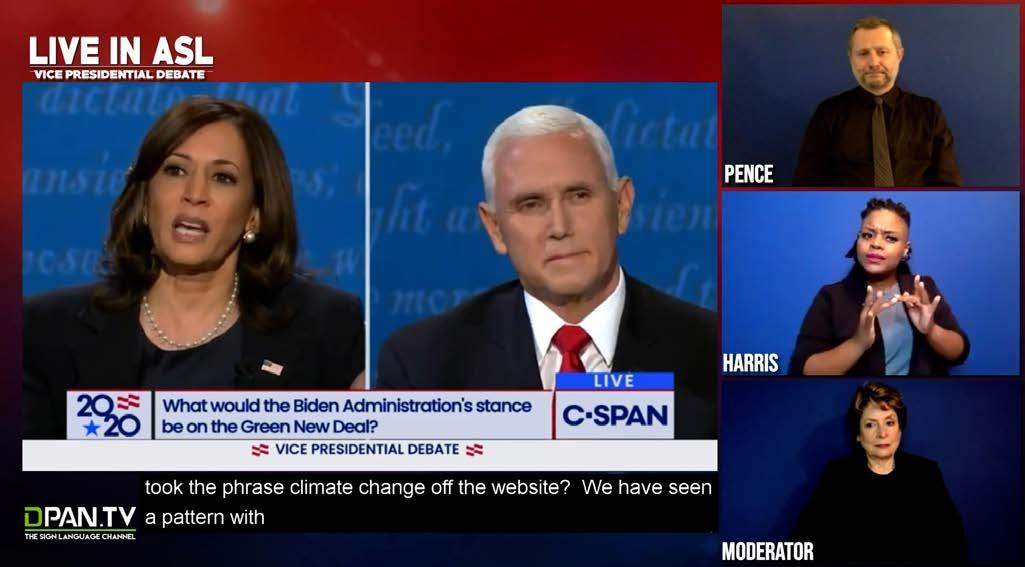
I felt goosebumps. Never before had a debate been accessible in ASL, but having female interpreters for Hillary and male interpreters for Donald Trump made a huge difference. It was important to me that the deaf community could participate and create their own political perspectives, which are often relayed to us by others who have access to information.
This began my journey of “curating” access. When Amber Galloway, a well-known music interpreter, called me in 2017 wanting DPAN.TV
15 NADmag | Fall 2021
APPROPRIATE
DPAN.TV produces live ASL access for the Vice Presidential debate with individual interperters representing the moderator and candidates Pence and Harris.
Having the right interpreter to best represent the deaf person help make VRS conversations more personalized.
to produce a livestream of Lady Gaga’s Super Bowl halftime show in ASL, I was ready to go. I’ve always loved Amber’s ASL music skills. As a musician, I can see music when she performs. I have had my share of horrible interpreters at concerts that ruined the experience for me, which is one of the reasons I rarely go to concerts, unless I’m performing. Amber is music to my eyes and I know for many others too. We have produced four Super Bowl halftime shows together featuring deaf interpreters and have done our best to curate them by who the halftime performer is, and the deaf interpreter who would be the best match.
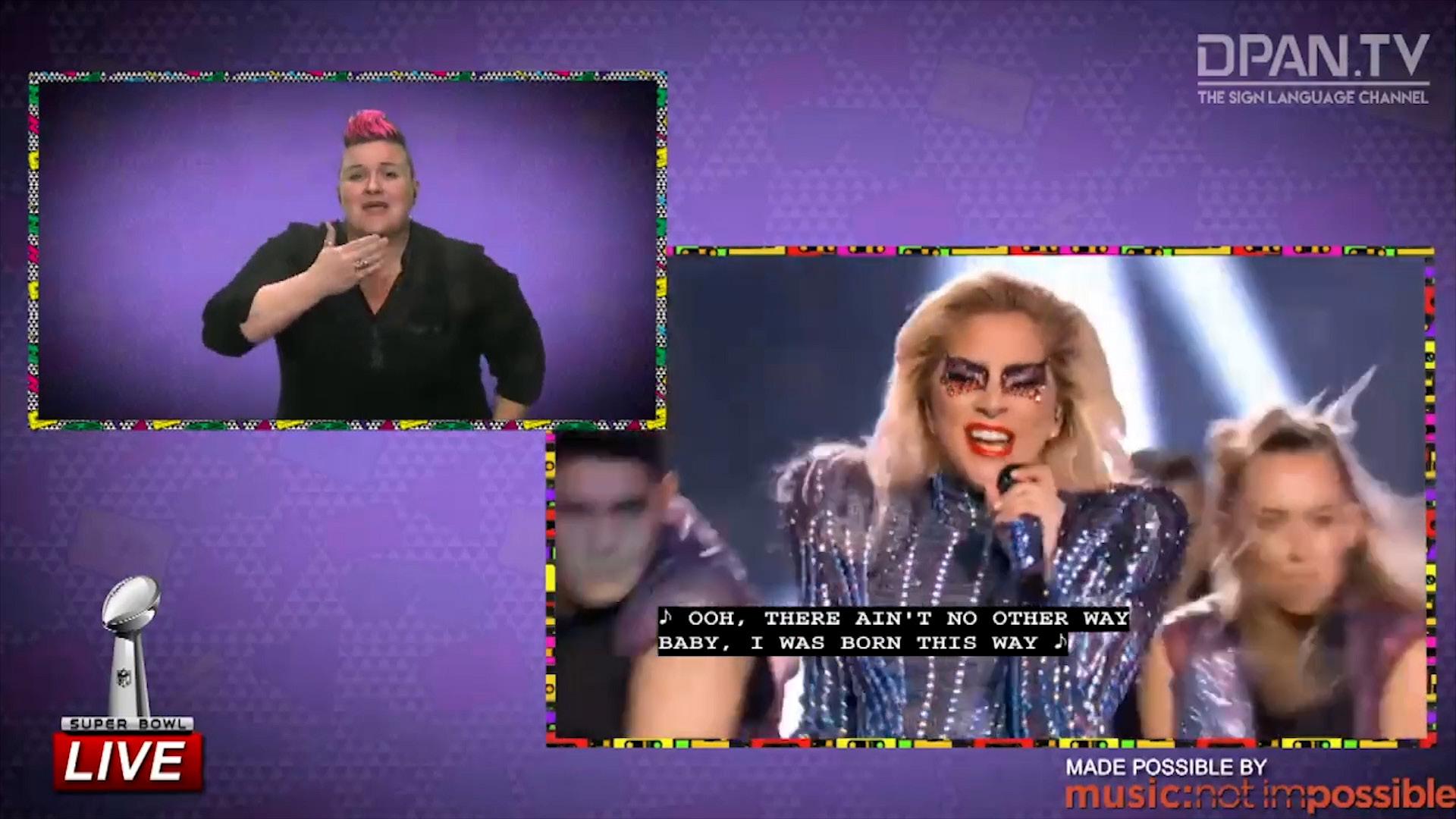
It has always been important at DPAN.TV when we create access videos, whether it is captions or ASL access, that proper representation is there. Prior to the pandemic, we focused primarily on using local interpreters who could come into the studio for our livestreams, and now we have access to interpreters across the country. We always take into consideration the subject matter of the video. For
example, if a video features a black person talking about racism, we will pair this up with a black person who can convey the message. If the video talks about LGBTQ+ issues, we will pair this project with a person who is a part of that community and who can visually convey the message. When we produced the 2020 vice presidential debates, we bought in April Jackson, a Black Deaf Interpreter, to interpret for Kamala Harris. As deaf people, we often rely solely on captions which is a great component of access but captions do not convey emotion or nuances. This is where an interpreter comes in.
I’m excited about the future of the interpreting field, especially the rise of deaf interpreters. It is magical watching hearing interpreters and deaf interpreters work together and I’ve been fortunate to have a front row seat to the magic producing live streams with DPAN.TV. I look forward to seeing more deaf people going into the interpreting profession too. When ASL teachers see potential interpreting students in their classes, they should approach them
16 FEATURE
Amber Galloway, a well-known music interpreter, interprets Lady Gaga’s half-time performance during the 2017 Super Bowl.
WHY IT IS IMPORTANT TO HAVE APPROPRIATE INTERPRETERS FOR AN ASSIGNMENT
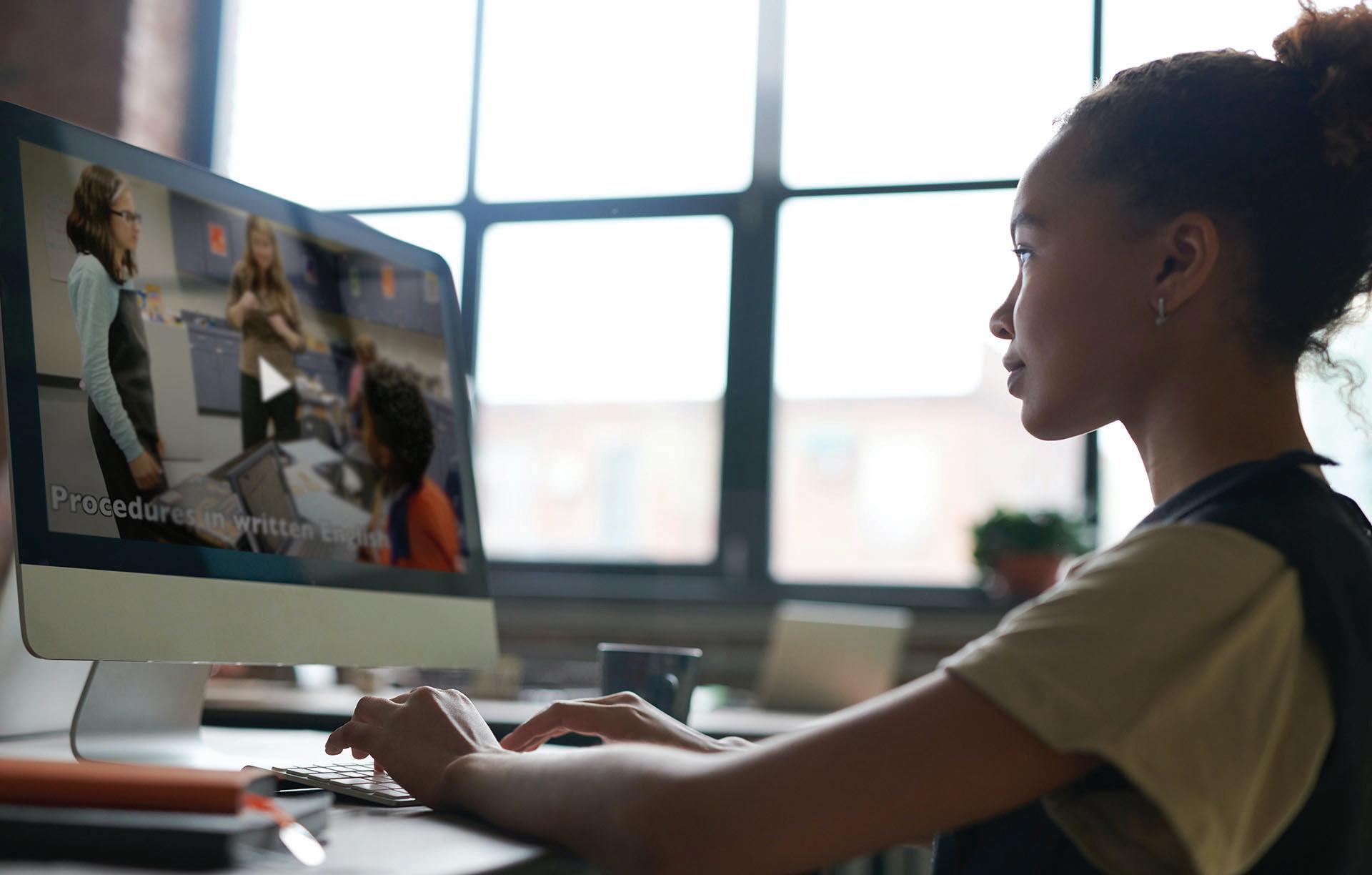

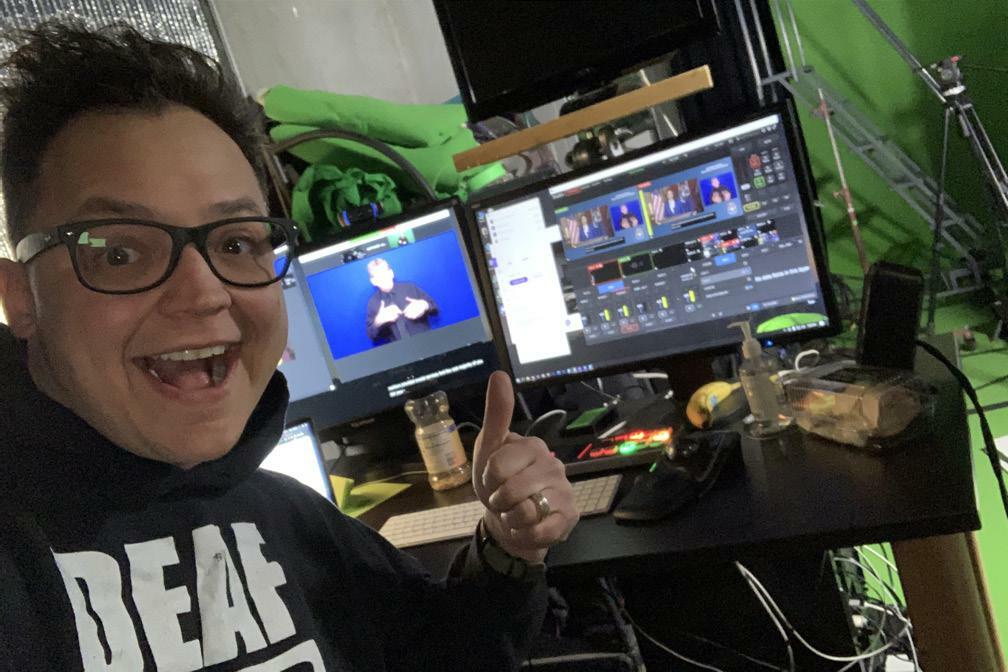
about their skills, have them meet a deaf person in the community; if they’re a person of color, you should make even more of an effort because there are deaf children of color out there who need them.

Now is the time for the deaf community and ASL teachers to help nurture the next generation of interpreters who can represent different backgrounds and reflect the rich diversity that exists within our community.
I personally look forward to seeing that.
Sean Forbes is a world-renowned Deaf Musician. In 2006 he co-founded D-PAN The Deaf Professional Arts Network to make music accessible for the deaf and hard of hearing community. Under D-PAN he established DPAN.TV The Sign Language Channel and ASL Captions a deaf-centric captioning and video access service. He resides in the Detroit area with his wife JoJo and their two daughters.
Sean Forbes is pictured giving a thumbs up during a live stream presidential debate.
Deaf Creators and Influencers to Support!
BY MARLENE VALLE
Social Media has been rapidly changing in the last few years with an increase of usage on different platforms such as TikTok and Instagram. According to We Are Social and Hootsuite’s 2021 Digital Report, about 53% of the world population are active social media users. From January 2020 to January 2021, there was an increase of 490 million more users due to the pandemic. Simultaneously, content creators and influencers have also been on the rise.

First, what is a Content Creator?
A content creator is someone who creates entertaining, educational, or even high-quality content from photographers, artists, and others. through social media or any platform, such as Instagram or YouTube. Content creators usually have a particular niche, such as focusing their topics towards fitness, travel, photography, and so on.
But then, what is an Influencer?
An influencer may also create content through social media, blog or any kind of medium. Influencers are people who have built a reputation for their expertise and knowledge on a particular niche, such as fitness or disability awareness. They generate large followers across their platforms, build relationships with their followers, and have the power to influence people making decisions based on their knowledge or relationship. Sometimes, they also work with companies and get paid to promote their products or services.
There are countless great content creators and influencers on social media in different niches;
however, there isn’t enough recognition towards deaf culture or accessibility. Most importantly, there aren’t enough Deaf or Hard of Hearing representation, those who share our experiences, on social media.
Representation truly does matter. It can shape how our community is viewed by society. Deaf creators and influencers have the power and influence to educate society about our Deaf culture, American Sign Language (ASL), and accessibility. Because of them, they can cause a ripple effect by changing other’s narratives or misperceptions.
However, this is not the only reason why representation matters. With an increasing number of Deaf and Hard of hearing creators and influencers in different niches, it means we find a sense of belonging in the digital world – a world where it’s far too common where we feel rejected due to uncaptioned videos, podcasts with no transcriptions available, and difficulty of finding our community online. Because of these Deaf creators and influencers, we can access different entertainers and educational content in different topics through ASL.
18
FEATURE
Seeing Deaf creators and influencers thriving gives us a beacon of hope that we can see the society’s misconceptions of us shifting, and that we all can strive and succeed in any area in life. Their mere existence truly can make a difference in so many ways.
For this issue, we interviewed nine Deaf and Hard of Hearing individuals who have different niches and goals, but they all share something in common: they love seeing how their content can make a difference when hearing people are learning about accessibility and our deaf culture.
Arlene Ngalle
What’s the one thing you wish you knew when starting out as a creator?
Preparing for any kind of retaliation and practicing a lot of social media self-care to maintain mental health wellness. I have experienced numerous attacks and I had to learn how to practice self-care now as well as when I became a creator.

Your content is viewed by EVERYONE, including hearing people – is it important for hearing people to view your content also, if so – why?
We are in the 21st century and it is long overdue to educate all hearing people. They need to learn and see that we, Deaf, Deafblind, DeafDisabled and Hard of Hearing are equal to others, if provided with accessible resources.
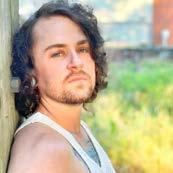
Blake Culley
What’s the one thing you wish you knew when starting out as a creator/influencer?
Even though I did not intend for my Instagram account to gain so many followers, I wish I had because I would understand better what my followers would
DEAF CREATORS AND INFLUENCERS TO SUPPORT!
want to learn from me as a Deaf, transgender and nonbinary person. I also would have invested in a better camera, backdrop, lighting, content, and so forth.
Your content is viewed by EVERYONE, including hearing people – is it important for hearing people to view your content also, if so – why?
I believe that everyone should have access to my content because I know what it is like to be denied access. I caption my content in hopes that my hearing followers and fellow influencers see that accessibility is very important. They can actually know what I am talking about because I caption my content and have a transcript available. I have noticed a huge spike in the hearing people I follow that also follow me who are starting to provide access by captioning or having a transcript available.
Casavina and Selena Minogue (Deafies in Drag)

What’s the one thing you wish you knew when starting out as a creator/influencer?
We wish we knew that creating videos could become a career when we first started.
Your content is viewed by EVERYONE, including hearing people – is it important for hearing people to view your content also, if so – why?

Yes, if they want to learn more about the Deaf culture and ASL, our content would be great to watch!
Cheyenna Clearbrook
What’s the one thing you wish you knew when starting out as a creator/influencer?
I wish I knew that it’s a lot of work! More specifically, when you add captions to your video to make it accessible for everyone. I always liked watching YouTubers,
19 NADmag | Fall 2021
Arlene Ngalle
@lifethrulensoflele
Blake Culley
@legendofblake
Casavina and Selena Minogue
@deafiesindrag
Cheyenna Clearbrook @cheyennaclearbrook
but got frustrated every time I watched something without captions – this led to me becoming a YouTuber! Yes, I have to do extra work by adding captions, but it’s still worth it in the end. I make every effort to make my content accessible to anyone.
Your content is viewed by EVERYONE, including hearing people – is it important for hearing people to view your content also, if so – why?
I need to make my content available for everyone, including hearing people because it is how I can grab their attention that’s “different” from theirs. It makes them wonder and become curious about my content. My content shows how I live as a deaf person in the hearing world, instead of talking about it. I noticed that when someone talks about their deafness, the hearing audience can be interested and it would lead them to have more questions about deafness. That is something I wouldn’t want to do; instead I show them.
Also, I want them to view me as a person not because of my disability and show them why I love filming. That makes me a YouTuber just like other YouTubers who enjoy showing their lives, too.
Leila Hanaumi
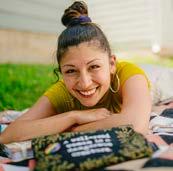
What’s the one thing you wish you knew when starting out as a creator/influencer?
Truth be told, I wouldn’t want to have known anything that I didn’t know when I decided to start @todayiawaken on an impulse. I wouldn’t want to have to know how much work it can be, from editing to captioning to responding to DMs. I wouldn’t want to have known the responsibility I would slowly come to feel from having a platform where a careless message could cause harm. I wouldn’t want to have known how it would come to change my life, because I might have chickened out. It was the process of learning as I went that made me fall in love with this craft. I’m so glad I went for it because it’s become
a space in my online life that brings me joy and purpose. The only thing I’d tell myself back then is simply, “Keep trusting your gut.”
Your content is viewed by EVERYONE, including hearing people – is it important for hearing people to view your content also, if so – why?
Yes, absolutely. When I create my content, I’m creating it from the lens of a deaf person (along with my multiple other identities)… but the topics I talk about, I think they transcend my deaf identity. There are subjects I think other human beings will be interested in, too, whether they are deaf or hearing. So, for my content to potentially resonate with hearing people— it shows them that there’s more to a deaf person than their deaf identity (as cherished and celebrated that may be!). For hearing people to listen to deaf people about things other than deaf-related issues is an act of ally ship. It’s seeing us as whole.
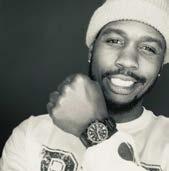
Max Maxey
What’s the one thing you wish you knew when starting out as an influencer?
When I was starting out as an influencer, I wish I understood how to monetize my content earlier. The influencers today have an abundance of resources available now, compared to five or six years ago. Let your network boost your net worth on social media.
Your content is viewed by EVERYONE, including hearing people – is it important for hearing people to view your content also, if so – why?
In staying true to my identity, I consciously try to choose content that both the hearing and deaf communities can enjoy through video and audio, whether it’s an educational video with upbeat music or vibes with music being shown through sign language. The more your content can resonate with people, the higher chance of increasing more awareness, acceptance and change.
20 FEATURE
Leila Hanaumi
@todayiawaken
Max Maxey
@deafinitelydope
Melissa Elmira Yingst
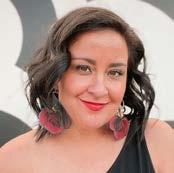
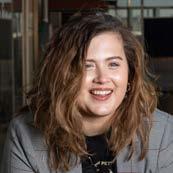
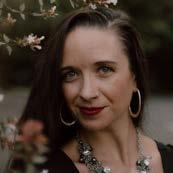
What’s the one thing you wish you knew when starting out as a creator/influencer?
One thing that I did not realize was how much of an impact it would make on the community - it’s all been good, though! I have made so many connections with people that I normally might not have connected with thanks to what I share on social media. It makes me feel closer to people when we are able to be real about LIFE. So, yeah, that’s been a great and pleasant surprise.
Your content is viewed by EVERYONE, including hearing people – is it important for hearing people to view your content also, if so -- why?
Yes, because my content is curated by Deaf people who have lived authentic experiences of being Deaf. I also think I give other perspectives since there is no one right way to be Deaf, in terms of identity and upbringing. It’s also so important to consider the intersectional identities many Deaf people have.
Renca Dunn
What’s the one thing you wish you knew when starting out as a creator/influencer?
There will always be “internet trolls” no matter what. It does not matter what content you post: funny, uplifting, controversial, or challenging topics, there will always be someone who disagrees with you or just does not like your type of content. They might send you either a direct message with mean words or even post a comment. Don’t be discouraged by them. Instead, just focus on the messages from the majority that uplifts you or gives you constructive feedback. At the end of the day, we have to remind ourselves that we cannot please every single person.
DEAF CREATORS AND INFLUENCERS TO SUPPORT!
Your content is viewed by EVERYONE, including hearing people – is it important for hearing people to view your content also, if so – why?
I always try to make my content accessible for everyone by adding subtitles, video descriptions/ transcripts, and image descriptions in the post or in the comments. Inclusivity and accessibility are very important to me. I am always advocating for accessibility, so this means I have to set myself as an example, especially to hearing people. When I talk to hearing people about making their content accessible and they see that I put the effort in mine, this means there should be no excuses and they can do the same. When hearing people understand my content, it gives them an opportunity to gain insight about the Deaf community which is one of the underrepresented communities, and how they may become allies or just simply benefit from a new perspective that they may share with their communities.
Rikki Poynter youtube.com/rikkipoynter
What’s the one thing you wish you knew when starting out as a creator?
Oh, that’s hard. I think the main thing is, I wish I never went with a multi-channel network (MCN) to begin with. They’re pretty obsolete now, but they were extremely popular a few years ago. They were supposed to help you grow your channel, get brand deals, and so on for a cut of your monthly Google AdSense check (30% for me) and I didn’t successfully get that help. I only got one real brand deal in four years. I wasn’t making much to begin with so after the 30% cut, I was only taking home around $75 a month on average. Even though my channel isn’t doing so well, I’m still making a lot more a month being on my own.
21 NADmag | Fall 2021
Melissa Elmira Yingst
@melmira
RD Sullivan @rdsullivanphoto
Rikki Poynter
@rikkipoynter
Tiffany Saccente of tmgsfotography
Renca Dunn
@reallyrenca
DEAF CREATORS AND INFLUENCERS TO SUPPORT!
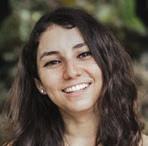
Your content is viewed by EVERYONE, including hearing people – is it important for hearing people to view your content also, if so – why?


I do think it’s important for hearing people to view my content. A majority of creators on YouTube especially are hearing and most of them don’t caption their content. I would like them to be able to see my accessibility content about captioning and let that encourage them to start making their own content more accessible to deaf viewers.
With thanks to the creators and influencers who shared their experiences and tips for our readers –perhaps you may become a creator or influencer too!
We hope to see many more deaf and hard of hearing creators and influencers thriving and making a difference.
Give them a follow to support them and their content!
Marlene Valle is the Social Media contractor at the NAD.
Playing with Patterns of Power
BY ARIEL BAKER-GIBBS

“The thing is, I like to be in your face,” says artist Christine Sun Kim, name signed as CK. CK has recently had a huge public exhibit at the Manchester International Festival, known as MIF, in the United Kingdom. MIF shows original, innovative work from ground-breaking artists from all over the world. CK’s art included captions she wrote that were drawn on the sides of buildings, on city boats, and on airplanes flying overhead.

CK’s MIF show about captions comes from the Deaf experience. Often captions are tiny at the bottom of a screen. They’re hidden away and easily forgotten. CK’s project is to make them huge, everywhere, taking over the world. Most importantly, they’re open captions. Nobody can turn them off. All the people who walk around Manchester, or in the other places where billboards of CK’s work stand (one near the American School for the Deaf in Hartford, Connecticut and there are more in New York City and Los Angeles), have to see the captions and drawings that a Deaf Korean-American artist has created. They have to see the world through her eyes.
“It was an unlimited budget. I didn’t know that until they asked me what I wanted to do. Then the festival team did all of the work. They’d come back to me
and say I’d have to change some of the words if the building owners didn’t like them—like the courthouse or city hall would say some of the things I wanted to put up were too touchy, so I’d modify it a bit and then the team would go back and forth. I did worry that some of the captions turned out to be too cute. But I didn’t have to do any of the meetings or coordinating. It was an incredible feeling. I’d never experienced that before: I just say my idea and then people do it.”
CK draws from her everyday life for her art. That means a lot of different things, but a consistent thread through it all is power and empowerment. Art began for CK at a young age. When her Korean immigrant family went to Korean church in Orange County, California, she and her sister would join the Deaf group in the basement, where the chaplain showed them many art slides. Later, in the mainstream program at University High School, CK took art classes with a Deaf teacher. “Often in school, people just do art out of duty, but I was passionate about it. I would create and create.”
Art was always the bright spot for CK, who has ADHD. “I was awful in school. To this day, I wonder how I got through it. The interpreters in high
23 NADmag | Fall 2021
FEATURE
“Captioning the City.” Manchester International Festival, UK. 2021. CK captions the blue sky with a plane pulling a banner: “The sound of no fight.”
Christine Sun Kim, a Deaf Korean-American artist.
2021 Tate Tullier Photography
2021 Lee Baxter for Manchester International Festival
school often made me feel like I didn’t use them well. They’d be like, ‘You’re not paying attention to me, how typical of you. If you’re not going to look at me why am I even here?’ I’d feel put down by them. I’d also be really sleepy in class. I felt like I had to think really hard to give them what they wanted.”
It turns out that ADHD is perfect for a career as an artist, though. “I think as an artist, you have to be fully engaged with the world and what’s happening in it. Some artists don’t choose to do that, but for me it’s really necessary to connect with the community, with people, with world news. ADHD really helps me move between those things, to jump around.”
Her never-ending search for new things and her bouts of hyper focus also let CK work through project after project with many different approaches to topics. “Obsess hard, then it’s done. Obsess, done. It feels amazing, and even a little bit sick.” But it took a while to get there.
After graduating RIT with a B.S. in graphic design in 2002, CK had no idea what to do. She moved from odd job to odd job, none lasting for longer than a year, until she landed a job at the Whitney Museum of Art in New York City as an ASL educator in 2006. That, along with a day job in publishing, taught CK self-discipline for the things that really mattered to her. She did hours of research on the art history that she was presenting, learned to make a good impression by showing up on time and prepared, and practiced her public speaking skills. Looking back, those lessons were invaluable for her career as an artist.
“I loved meeting strangers. I enjoyed getting into the art world, just the figuring out who everyone was, learning what everyone was about.” That was also a strategy to learn who would be a good ally to a Deaf person in a hearing group, to figure out who people would listen to, to get them to switch to texting on phones to communicate. But beyond that, it was a revelation that the best art happens when people work with people they like. There wasn’t a need to worry about status: it’s simply whether people find you and your work interesting or not.
“I grew up in a very, not sheltered, but insular community. My life was defined by the educational system: the yellow school bus, the mainstream program, the same interpreters—until I was eighteen. So, when I ventured out, I was surprised.”
“Meeting strangers and learning their background and just learning new things and the news that they shared was so stimulating. When I’m with the same people for a long time, we end up talking about the same things, and I just deflate. The energy fades. But strangers, new people, always bring energy: Where are you from? What do you bring? What’s it like? I also think understanding other people’s experiences helps me define my place in the world better. It makes me connect better.”
While CK’s work is now split between big public murals and smaller, more detailed drawings like her extremely successful Degrees of Deaf Rage pie chart

24
“Degrees of Deaf Rage Concerning Interpreters (Terps).” Degrees of Deaf Rage, White Space Beijing. 2018. A piece from CK’s most successful series, in which she uses pie charts and geometrical diagrams to demonstrate uniquely Deaf experiences. This one is a smudgy chart with diagrams of angles at different degrees--acute, legit (or right), obtuse, straight up, reflex, full on, or beyond rage. These are labeled sequentially as terps who can’t take feedback, who secretly self-congratulate for “helping,” whose voices take over ours, who fail to make us sound as smart as we truly are, who use our contacts for their gain, who violate confidentiality (code of ethics, yo) – and fake terps at news conferences.
FEATURE
2018 White Space Beijing and Yang Hao
series, she first landed on the art scene as a sound artist. This drew a lot of attention, not only because CK is obviously Deaf, but also because she has a talent for communicating what it’s like to be Deaf through her art, and for challenging hearing people’s ideas of what it’s like to be hearing. The TED fellowships she had in 2013 and 2015 show CK talking about how she sees sound as a form of power and control, a sort of social currency. This was an earlier obsession for her.
“In the beginning, I had a strong itch to push the limits with speakers. You know, like how Deaf people want to test how loud things can get, just to crank it up to see how far it can go? Because so often, we’re not allowed.” She asked a hearing sound engineer to sit with her to buy speakers and equipment. She didn’t get what difference any of it made.
“I was like, why can’t we just plug it all in? And he was like, ‘No, no!’ It was because of the power capacity for the speakers, like if the wattage was too
PLAYING WITH PATTERNS OF COLOR
high, it would break the speakers or they’d catch on fire a bit. I could smell the smoke. But I didn’t care. I’d send them to get fixed. After a while, the itch faded. I moved on.”
CK’s art is shown all over the world now, from New York City, New York; Busan, Korea; Beijing, China; Berlin, Germany; London, England, to Los Angeles, California. Over the years, her artworks have been performances about vibrations and speakers; creative projections of captions and words and text; Venn diagrams and pie charts about different experiences of Deaf oppression; musical notation illustrations of different contemporary Deaf experiences; and many ASL and Deaf English drawings, and more. All these projects are intensely personal to CK. For CK, to be powerful as an artist she has to be completely herself and completely creative. Instead of always fighting against the world’s expectations of her or responding to them, her art shows a way around it. A way to do it differently.

25 NADmag | Fall 2021
“Echo Trap.” Crip Time, Museum für Moderne Kunst (MMK), Frankfurt, 2021. A large white room with a high skylit ceiling. A thick black line curving down the wall, labelled “hand,” then bouncing up again, labelled “palm,” repeated as it bounds across the walls. We can feel our heads moving up and down as we follow the bouncing black line.
2021 Axel Schneider for Museum für Moderne Kunst MMK
PLAYING WITH PATTERNS OF COLOR
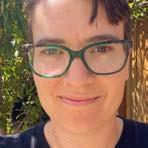
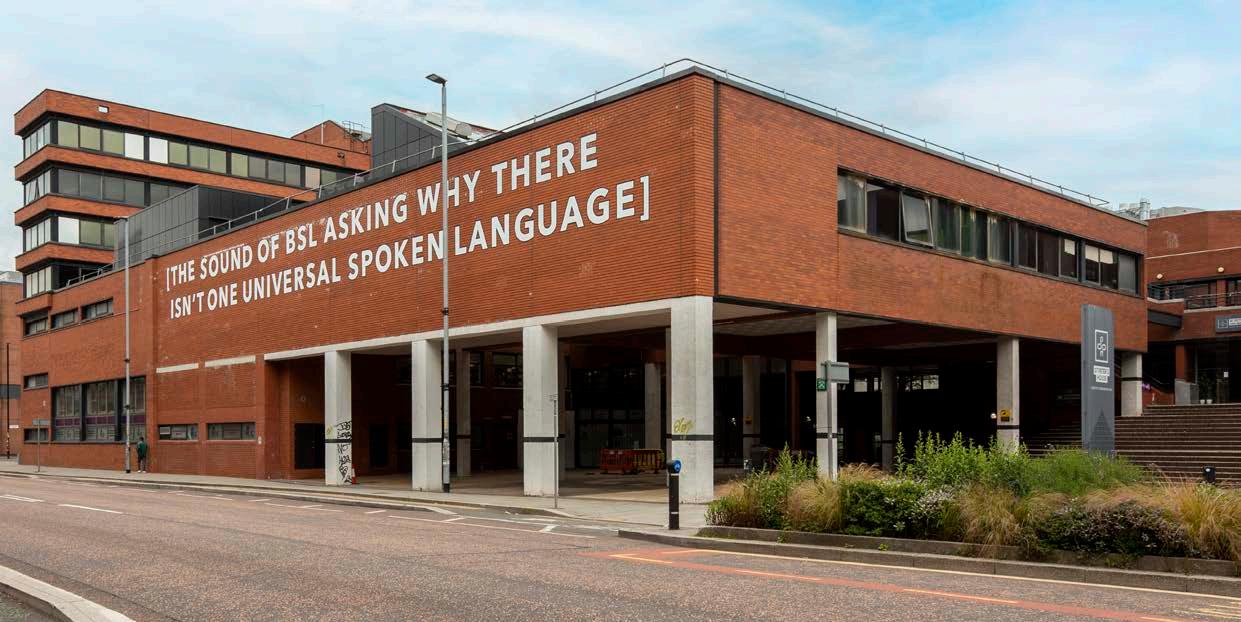
Her current interest in murals, apart from how big and in-your-face they are, has been about repetitive wallpaper patterns. In September, CK had an opening at the Museum of Modern Art in Frankfurt, Germany (called MMK). It’s a room with a thick dark line bouncing around the walls. At each place the line touches down, there is a little note saying “HAND” and when the line bounces up again it says “PALM.” She explains, “If you just have a hand on its own, it means nothing. But if you poke it with your other hand, like the sign for ‘against,’ suddenly your other hand becomes a palm. Suddenly it becomes three-dimensional. Suddenly there’s a meaning.”
“I got this idea because I love trying to figure out where the wallpaper pattern starts and ends. I love the never-ending cycle of it.”
 Ariel Baker-Gibbs is a Deaf writer and graduate student living in the Bay Area.
“Maybe Here.” Sweat, Haus der Kunst, Munich, 2021. Inspired by bathroom wallpaper, “Maybe Here” makes the same kind of patterns when signed as we see it on the wall in small, repeated diagrams of hands going up and down or around in circles, labeled “maybe” and “here.”
“Captioning the City.” Manchester International Festival, UK. 2021. This caption is “the sound of BSL asking why there isn’t one universal spoken language,” along the top of a red brick building, which is the Manchester Deaf Centre.
2021 Max Geuter for Haus der Kunst
2021 Lee Baxter for Manchester International Festival
Ariel Baker-Gibbs is a Deaf writer and graduate student living in the Bay Area.
“Maybe Here.” Sweat, Haus der Kunst, Munich, 2021. Inspired by bathroom wallpaper, “Maybe Here” makes the same kind of patterns when signed as we see it on the wall in small, repeated diagrams of hands going up and down or around in circles, labeled “maybe” and “here.”
“Captioning the City.” Manchester International Festival, UK. 2021. This caption is “the sound of BSL asking why there isn’t one universal spoken language,” along the top of a red brick building, which is the Manchester Deaf Centre.
2021 Max Geuter for Haus der Kunst
2021 Lee Baxter for Manchester International Festival
ASL Everywhere: An Interview With Wawa and Alexis
BY HOWARD ROSENBLUM,
American Sign Language (ASL) has become visible everywhere – movies, television, commercials, and sporting events. How did we get here with so much visibility? To explore this important issue, we interviewed renowned deaf writer, rapper, and performer, Warren “Wawa” Snipe, and deaf civil rights advocate and entrepreneur, Alexis Kashar. Alexis was instrumental in connecting the NAD with the National Football League (NFL) to ensure that at each Super Bowl since 2010, the ASL performer is deaf. At Super Bowl LV, Wawa wowed everyone with his remarkably innovative rendition of the National Anthem and America the Beautiful, which truly elevated the visibility of ASL.

What are your thoughts about the increased visibility of ASL in the movies, on television shows, and in commercials?
Wawa: Seeing increased visibility of ASL in media has been a tremendous deal to me. This increase brings more accessibility and inclusion, but we’re just scratching the surface. This is a good start. With increased accessibility, open captions needs to be a norm in movies, and closed captions need to be permanent in all TV shows and commercials. ASL should also become a norm on those TV shows and commercials. I have a good feeling that’s going to happen.
Alexis: The inclusion of ASL in all forms of media is long overdue. The media is one of the most powerful ways to promote change. Hollywood and the business community’s current obsession with ASL will help pave the way for dialogues that may have once been considered off limits or taboo for many people. It is my hope that this obsession is not fleeting but that ASL becomes a norm in all forms of media. As people learn about both the gifts and the needs of the deaf community, it is only natural that a more accepting and accessible society will follow. I look forward to the changes ahead of us.
27 NADmag | Fall 2021 FEATURE
Alexis Kashar, Warren “Wawa” Snipe, and CEO Howard Rosenblum discuss how ASL is becoming prevalent in all forms of media.
NAD CEO
What does it mean to you to have ASL visible at the Super Bowl?
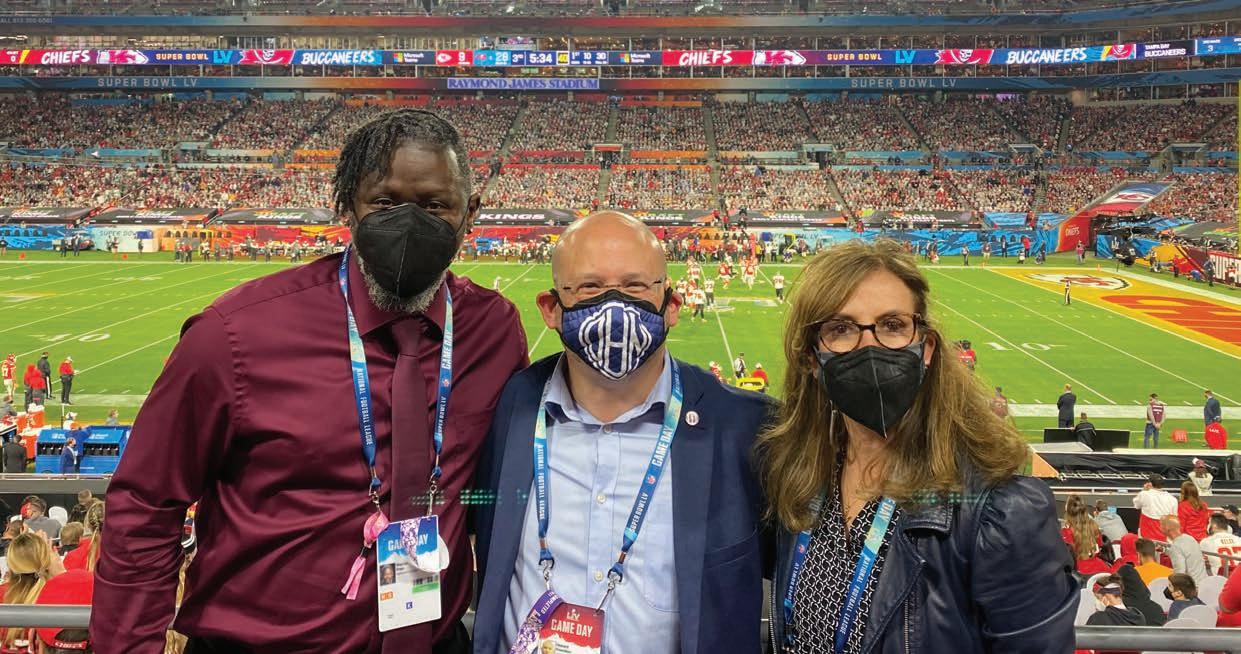
Alexis: Sports has a powerful unifying effect, as it is where people from all backgrounds come together and speak the same language. The Super Bowl is the ultimate of all sporting events, viewed by millions all around the globe. It is a powerful space for visibility where many ideas come to life and are celebrated. To showcase ASL and our incredibly talented deaf artists on the world’s largest stage is one of the best ways to promote the beauty and the legitimacy of the language.
Wawa: To have ASL visible at the Super Bowl shows the beauty of accessibility during the music performance. It was thrilling to be able to perform and show everyone how ASL can artistically and fantastically portray songs. I appreciate the
opportunity that the NFL and the NAD provides to deaf performers like me to make ASL available to the world. It would be awesome to have the same accessibility for the Half Time Show as well with a deaf performer!
ASL has become more widely seen during important health briefings such as those held by state governors and the President. Why is this important?
Wawa: Having interpreters during health briefings were essential for us. To be included with the same information, at the same time as hearing people, made awareness more apparent. We didn’t have to scramble to guess what was going on and getting misinformed about certain important things.
“Sports has a powerful unifying effect, as it is where people from all backgrounds come together and speak the same language.”
FEATURE
Alexis, Wawa, and Howard during Super Bowl LV between the Kansas City Chiefs and the Tampa Bay Buccaneers at the Raymond James Stadium in Tampa, Florida.
ASL EVERYWHERE: AN INTERVIEW WITH WAWA AND ALEXIS
We do, however, need to make sure that interpreter screening is important. There were some cases where the interpreter wasn’t qualified and left the deaf community with a bad taste. We can’t have that again.
Alexis: The increased visibility of ASL interpreters (both deaf and hearing) during the pandemic not only helped usher in a new standard for emergency communications, it helped to mainstream ASL on many levels. The primary reason that ASL interpreting is provided during these briefings is for access, but there are other important reasons to make it available. First, it reminds people of the importance of providing access to ASL users. Second, it creates a domino effect of requiring ASL at all events beyond emergency press conferences and we have seen a big increase to the point where the absence of one is noticeable. Third, it cements ASL as a legitimate mode of access. And finally, it creates conversations surrounding the beauty of ASL.
How does more ASL visibility benefit the Deaf Community?

Alexis: With the Deaf Community being a small minority, we have to constantly remind the world of our existence, and we have one of most beautiful and powerful tools, ASL, to help us do this. The increase in visibility by various corporations shows that they recognize and understand the power and appeal of Deaf Culture. Such recognition tends to lead to full acceptance of a culture and community such as ours.


Wawa: There is more acceptance of the Deaf Community when there is more visibility of ASL. It would be great if America recognizes ASL as an official language. I think that and having ASL class requirement in school systems would further increase visibility.
What do you think is next for ASL in all kinds of media?
Wawa: What we need in Media are deaf directors, producers, writers. People who genuinely have the heart for Deaf Culture and know the culture can produce stories and media content through deaf eyes. With deaf people in charge, they can provide the best ways, stories, and even communication that can and will benefit both the deaf and hearing communities.
Alexis: To utilize media as a tool of change is extremely powerful. We need to get a seat at each decision-making table to ensure at least two things: 1) ASL is used as a medium to deliver information whenever appropriate and that 2) ASL is delivered at the highest level quality and accuracy.
29 NADmag | Fall 2021
Howard A. Rosenblum, Esq. has served as the NAD Chief Executive Officer since 2011.
A “selfie”
outside the stadium.
Wawa is seen on the large screen performing the national anthem in ASL at the Super Bowl LV February 7, 2021.
Jr. NAD: Looking Back 60 Years
BY CHANEL GLEICHER BONHEYO
During the1960 National Association of the Deaf (NAD) Convention in Dallas, Texas, Caroline H. Burns proposed to establish a Junior (Jr.) NAD organization with chapters nationwide.
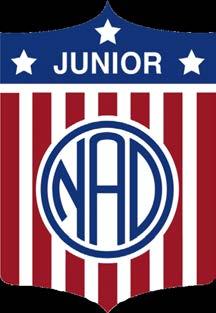
The Beginning Jr. NAD became a reality during the 1961 - 1962 academic year with six chapters: Missouri School for the Deaf, South Dakota School for the Deaf, Montana School for the Deaf, California School for the Deaf Fremont and Riverside, and Oklahoma School for the Deaf. Since then, Jr. NAD has evolved throughout 60 years. At one point, Jr. NAD had 57 chapters with more than 2,000 members! Today, there are 40 chapters.
The primary purpose of the Jr. NAD is to provide opportunities for our young deaf students to become leaders through the Jr. NAD mission of “scholarship, leadership, and citizenship.” Through Jr. NAD chapters, members are responsible to choose their officers, run their chapter meetings, host community events, plan fundraisers, and volunteer in their community.
Junior Deaf American
The Junior NAD Bulletin later renamed The Junior Deaf American, was first printed in 1962and was run by Jr. NAD members. Students were responsible for fundraising for project expenses, working with Jr. NAD chapters to develop articles, and to distribute the publications across the U.S. Although this printed publication came to an end, the NAD Youth Program office now distributes the online Jr.NADmag 3x a year to active Jr. NAD chapters. The online Jr. NADmag is developed by Jr. NAD members, rotating by chapters.
Conferences
On May 8 - 12, 1968, Jr. NAD coordinated its first Jr. NAD National Convention at Gallaudet College (now Gallaudet University). About 317 registrants (including 120 students, 43 advisors, parents, and community members) travelled to Washington, DC for their firstever convention.
In the following year, Jr. NAD hosted a regional convention in Indianapolis, Indiana. This led to the start of biennial Eastern/Central and Western Deaf
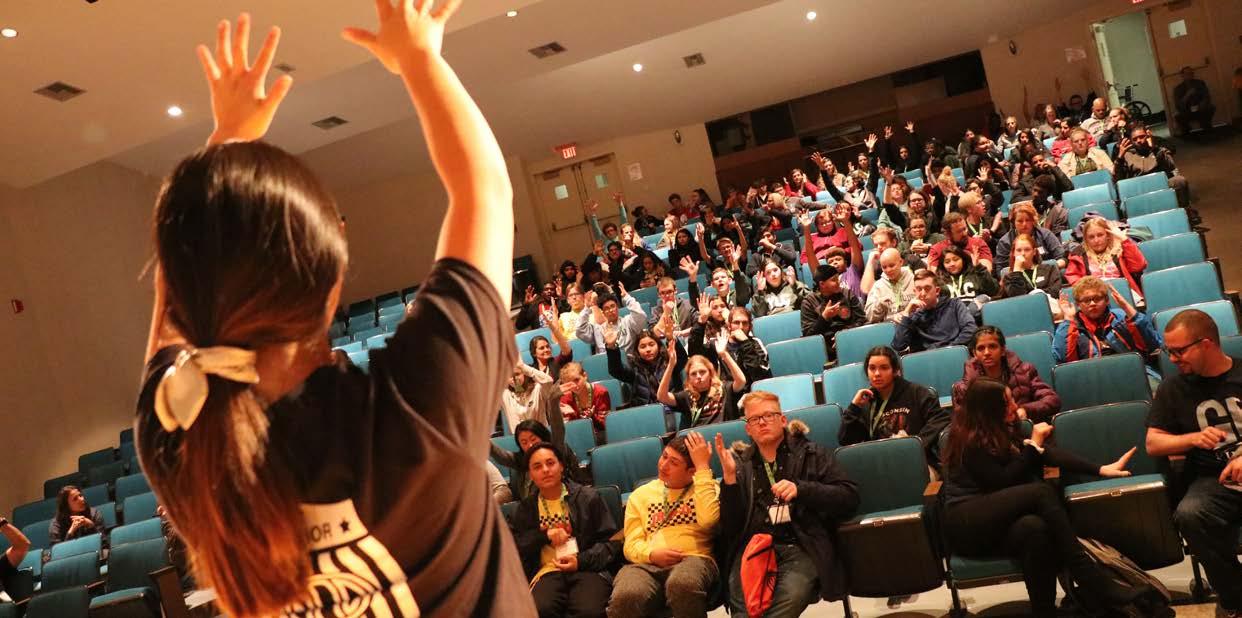
30
FEATURE
Emma Kane cheers along with the Jr. NAD members during the Jr. NAD National Conference at the Rochester School for the Deaf in 2019.
JR. NAD: LOOKING BACK 60 YEARS
Youth Conferences. The National Conferences were held in alternating years.
Youth Leadership Camp
In 1968, Frank Turk, the national director of Junior NAD and Gary Olsen, the Jr. NAD project specialist, had the idea to establish the Youth Leadership Camp as an extension of the Jr. NAD program activities. This idea became a reality in the summer of 1969.
Gallaudet Prep Chapter
Gallaudet Prep Chapter, also known as Collegiate NAD (CNAD), was active in the early 70’s but was short-lived. This chapter was homed at Gallaudet College and had college students as members. The CNAD members were also committee chairpersons for important events such as The Youth Leadership Development (YLC), Junior Deaf American publications, and more.
Metro Chapters
In the early 2000s, the NAD experienced a decreasing number of Jr. NAD chapters. To address this, an innovative idea was suggested -- a metropolitan Jr. NAD chapter. Instead of limiting chapters to deaf schools only, metro chapters allowed students from mainstream schools to apply as a chapter to meet and exchange ideas. However, this concept wasn’t entirely new. The Metro New York chapter was established in 1967 when Albert Berke, a New York resident, recognized the need of a Jr. NAD chapter in the New York area. This chapter was not affiliated with any school, but welcomed members from Lexington School for the Deaf, Public School 47, and other hearing schools.
Jr. NAD Pages
NAD Conferences occur in non-Jr. NAD conference years. Some NAD conferences used student volunteers, but it wasn’t a regular program.
Where are they now
CURRENT OCCUPATION
Superintendent at California School for the Deaf, Riverside
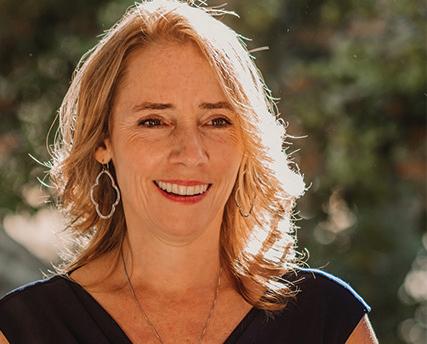
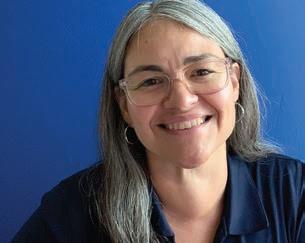
JR. NAD MEMBER 1985-1989
ROLE(S) WITH THE COMMUNITY Board Member of the Conference of Educational Administrators of Schools and Programs for the Deaf (CEASD), Hands & Voices, and Southwest College for the Deaf (Howard College)
CURRENT OCCUPATION Director of Student Affairs, Pennsylvania School for the Deaf

JR. NAD MEMBER 1987-1992
ROLE(S) WITH THE COMMUNITY President, National Association of the Deaf
CURRENT
JR. NAD MEMBER 2010-2016
ROLE(S) WITH THE COMMUNITY 2016 & 2018 Jr. NAD Pages –Atlanta, Georgia & Phoenix, Arizona, 2015 Jr. NAD Chairperson Conference - Orlando, Florida, and Florida Association of the Deaf Youth Committee
31 NADmag | Fall 2021
Nancy Hlibok Amann
Melissa Draganac-Hawk
Jomar J. Figueroa
OCCUPATION USA Deaf Basketball Youth Program Director and Game & Facilities Director at MSSD
Brigetta Bourne, at the 2012 NAD Conference in Louisville, Kentucky, recommended that Tawny Holmes Hlibok who was the NAD Education Strategy Team Chair at the time, to re-establish a “pages program”. In 2014, the first revived Jr. NAD Pages program took place in Atlanta, Georgia. Since then, every NAD Conference has a group of Jr. NAD Pages to volunteer for the national conference. We even had Jr. NAD Pages at our National Leadership Training Conference in 2019!
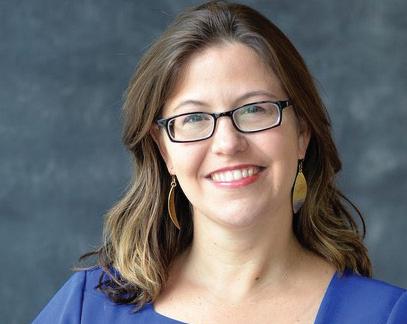
Jr. NAD Delegates
Eventually, the regional conferences diminished. However, the national conferences continued and made important contributions to its program.
During those conferences, Jr. NAD members hosted
Where are they now
their General Assembly where Delegates vote on bylaws changes, the top five priorities, and select two Jr. NAD Delegates to attend the Biennial NAD Conference. The Jr. NAD Delegates have a big role of representing all Jr. NAD members and to sit in the Council of Representatives meetings.
In 2020, the Jr. NAD Delegates Aubrie Bauer and Natnail Tolossa made a huge victory when one of the Jr. NAD selected priorities (from the 2019 Jr. NAD National Conference) made it to the NAD’s top five priorities. The priority was to achieve equity in deaf education to ensure schools with smaller enrollments have access to the same amount of resources as schools with larger enrollments. This was the first time a Jr. NAD priority became a NAD priority!
(continued)
CURRENT OCCUPATION
Secondary Teacher- Social Studies at New Mexico School for the Deaf (NMSD)

JR. NAD MEMBER 2004 - 2008
ROLE(S) WITH THE COMMUNITY NMSD Student Body Government sponsor, NMSD Jr. NAD advisor, NMSD Class of 2018 & 2022 sponsor, NMSD Elementary Volleyball coach, Club Volleyball Coach – Santa Fe Storm & Duke City Volleyball Academy, and served as a secretary for Texas School for the Deaf Alumni Association (TSDAA) from 2014 to 2018 and WFDYS Children Camp 2014 administration team at Gallaudet University in Washington, DC
CURRENT OCCUPATION Language Policy Counsel and Associate Professor in Deaf Studies, Gallaudet University
JR. NAD MEMBER 1996 - 2000
ROLE(S) WITH THE COMMUNITY DCAD President/Vice President; MDAD Committee for Families member; NAD Youth Strategy Team chair; NAD Education Strategy Team Chair; NAD Language Deprivation Taskforce Chair; Vice President, National ASL and English Bilingual Consortium for Early Childhood Education; Vice-President, Council of the Education for the Deaf (CED); CED Representative on the Joint Committee for Infant Hearing, National Deaf Education Conference co-founder, and Education Policy Counsel for the NAD
CURRENT OCCUPATION
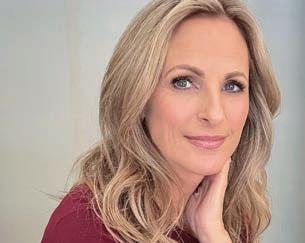
Actor, Producer, Author, and Activist
JR. NAD MEMBER 1981-1983
ROLE(S) WITH THE COMMUNITY Activist who has testified before Congress several times to support captioning and civil rights access, and has advocated for proper casting and captioning of all movies and television projects within which she has been involved
32 FEATURE
Tawny Holmes Hlibok, Esq.
Dominic Harrison
Marlee Matlin
JR. NAD: LOOKING BACK 60 YEARS
Jr. NAD Today
The Jr. NAD program has graduated over 10,000 alumni. Former Jr. NAD members have become successful leaders and advocates for the deaf and hard of hearing community including teachers, administrators, professors, and lawyers. For more information on the Jr. NAD history, you can learn more in “From Oaks to Acorns: Promoting Deaf Youth Leadership Through Multigenerational Leadership” by Frank R. Turk.
Chapter Kit
We aim to celebrate Jr. NAD by ensuring it’s around for another 60 years! To join the celebration, sign up to establish a Jr. NAD chapter! You will need the following things to start a new chapter:
1) Find dedicated advisor(s) – Ask someone who is passionate for the local community to be willing to oversee chapter activities.
2) G ather a group of students – Students need to be in the 7th-12th grade. There is no minimum number requirement.
3) C ontact the NAD Youth Programs – Email Chanel.Bonheyo@nad.org to get a copy of the Jr. NAD Chapter Kit to help guide you on Jr. NAD chapter expectations.
4) Fill out the membership form online at youth.nad.org/junior-nad BONUS: We are giving complimentary membership for chapters that sign up this year!
CURRENT OCCUPATION
Student at Rochester Institute of Technology (RIT), Applied Computer Technician and Computer Information and Technologies Major
JR. NAD MEMBER 2018-2019
ROLE(S) WITH THE COMMUNITY
National Technical Institute for the Deaf (NTID) Student Congress President

CURRENT OCCUPATION
Artist/Advocate
JR. NAD MEMBER 1990 - 1992
ROLE(S) WITH THE COMMUNITY Freelance actor, director, choreographer, dancer, director of artistic sign language; teaching artist and museum educator (in NYC); Current Board of National Theatre of the Deaf; Dance/NYC’s Disability Taskforce; and Co-founder of BHo5.org


CURRENT OCCUPATION
Accounting Consultant with TZORNOZA, LLC
JR. NAD MEMBER 2005-2009
ROLE(S) WITH THE COMMUNITY Help Deaf entrepreneurship gain an understanding of the financial measurements that indicate the health of their businesses while empowering them and leading them positive outcomes using the QuickBooks online platform
33 NADmag | Fall 2021
Natnail Tolossa
Alexandria Wailes
Travis Zornoza
JR. NAD: LOOKING
BACK 60 YEARS
5) Subscribe to the NAD Youth Programs eBlasts – Chapter memberships include monthly emails from the NAD Youth Programs, access to the Jr. NAD Portal, and receive an online Jr. NADmag 3x a year!
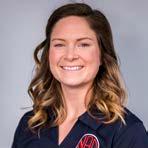
Also, eligible chapters will be able to attend the 27th biennial Jr. NAD Conference at the California School for the Deaf – Riverside in Riverside, California, March 2022. Keep an eye out for more information about the conference at youth.nad.org/ junior-nad . Sign up to secure your spot. We hope to see you there!

 Chanel Gleicher Bonheyo is the Director of Youth Programs at the NAD.
The front cover of Jr. NAD Deaf American Bulletin magazine, created in Spring 1971.
Chanel Gleicher Bonheyo is the Director of Youth Programs at the NAD.
The front cover of Jr. NAD Deaf American Bulletin magazine, created in Spring 1971.
DONOR LIST
The list below recognizes donations made by individuals and organizations to the NAD from February 2021 - July 2021. Donors are listed under the designated fund. If a fund is not designated, donors are listed under the general fund. Individual donors are recognized by their level of giving. Organizational donors are recognized by their member type. Individuals and organizations who are not members are listed as friends of the NAD.
There is a Donor Key on the right for individual giving levels and organization member status. Roman numerals following Benefactors (B) identify cumulative donation amounts in $1,000 increments.
Bequest
The NAD expresses great appreciation for the generous bequest from:
The Estate of Robert DeVenny
The Estate of Stewart and Rochelle Grill
Annual Fund Campaign –General
Reem Alhussain, FON Charisse Anderson, FON Anonymous, FON Sherry Atkinson, S Katherine Bacon, FON Steve Baldwin & Rosie Serna, Bl Dallas & Margaret Barker, Bll
Janice Barlow, Blll
Theresa Bates, FON Alan Behr, A Paul Bert, C Jo Bienvenu, P Sarah Blattberg, C
Alyson Boote, S Dorothy Brenner, BXl
Gregg Brooks, Bll Meredith Brown, Blll
Phyllis Bullon, C
Frank Burckardt, P
Armando Camejo, FON
Mirtha Castellano, FON
Cole Cater, FON
Yoshiko Chino, P
Steven Chough, BlV
Emily Clark, FON Patricia Clark, Bl Caroline Clifford, FON
Ed Cohen, Bll
Ashton Collett, FON
James & Ida Collins, FON
Joan Corley, C
Caitlin Crabb, FON Helen Cumberbatch, FON
Jordan Dabney, FON
Kathy Darby, Bll
Robert Davila, BVlll
Deborah Davison, A James de Groot, FON
Terrie Dixon, FON Gina Donofrio, P
Melissa Draganac Hawk, BXX Ruth Dubin, P Carol Duffy Clay, A Victoria Elliott, FON Susan Faustini, FON Elizabeth Fazzolari, S Jane K. Fernandes, A Melchior Fernandez, A Stephanie Feyne, S Michael Finneran, Bl Megan Floyd, FON Kimya Forouzan, FON Nathan Fowler, A
Jack & Rosalyn Gannon, BXl Ariel Garner, FON
Phyllis Genest-Stein, A Sean Gerlis, BlV
Molly Glauser, C
John Godich, Bl James Gordon, P
Sara Gottlieb, FON Leslie Greer, Bl
Nancy Gutfreund, FON Kelsey Hancock, FON Charles & Marilyn Harbison, Bl
Thomas & Kathryn Harbison, Bll Judy Harris, FON Ray Harris & Rachel Stone, BlV
DONOR KEY
B = Benefactor ($1,000 and up)
P = Patron ($500-$999)
S = Sustaining Member ($250-$499)
C = Contributing Member ($100-$249)
A = Advancing Member (up to $99)
SA = State Association Affiliate
FON = Friends of the NAD
OA = Organizational Affiliate
Mary Logan, FON
Kimberly Hart, FON Konrad Hernblad, FON Albert & Peggy Hlibok, BVl Stephen & Tawny Hlibok, BV Hollis Hoffnung, Bl Abraham Holston, FON Karen Holte, BlV Katie Hoye, P Tracey Huguley, C Luise Hutzler, FON Kaj Jensen, FON Rae Johnson, BV Priscilla Jones, S Emily Kanney, FON Donald Keefe, FON Anna Kenolty, FON Holly Ketchum, BVl Brian & Jacqueline Kilpatrick, Blll Christine Kim, S Rebecca Knell, FON Laura Koons, FON Michael Koopongsakorn, FON Lee Kramer, BVl
Brandon Kyser, FON Mara Land, A
Scarlett Joy Larson, Bl Norman & Maedora Larson, Blll
Eric Leckfor, S Milton & Joy Lee, BXXl
Irene Leigh, BV Brenda LeMieux, Bl Matthew Lockhart & Julie Bourne, BV
Betty Lynch, BlV Bruce Makowski, Bl Celia Malins, C James Manning, FON Yvette Marley, S Elisa Maroney, S Amber Martin, A Barbara Martin, A Atheel Mary, P Lisa Masure, A Robert & Susan Mather, BXlll Tina Mathews, FON Sam Mauro, FON Ester McAllister, C Shelley McAllister, C Andre McCoy, C Raymond McDevitt, S Kathleen McGinley, FON Marge McHenry, S Betty McKown, BV Kathryn McLaughlin, FON Brian McMahon, P Judith Meador, Bl Jon Meredith, FON Robin Mills, P Teresa Moon Flaherty, P Winchell & Ruth Moore, Bl James Morgan IV, A Rhea Morgenstern, C Dana Mulvany, Bl Kendra Nielsen, C Kyle Nye, A Benro Ogunyipe, P Gary & Edna Olsen, P Isabel Olson, FON Mariana Otano, A Jana Owen, S Teika Pakalns, Bl Michael Palmquist, FON
35 NADmag | Fall 2021
Shari Parsons, FON
Leonard Peacock, BVlll
Klaudia Persson, FON
Jennifer Pfau, S
David Pielick Jr, A
Jim & Kathy Potter, BVl
Martin Price, C
Jennifer Prosceo, C
Larry Puthoff, Bll
Gilda Radwan, FON
Heidi Reed, Bl
Cara Reimann, FON
Sara Resting, FON
James Revell, Blll
Kate Rice, A
Tiffany Richardson, FON
Joseph & Kay Francis Rose, BVll
Allan & Judith Rosenblum, BlV
Brenda Rosser, FON
Bryon Rowe, Bl
Bonnie Rudy, BXl
Lori Raskin, FON
Sylvia Sahota, FON
Loretta Sarro, Bl
Suzanne Sattergren, S
Martha Saunders, Bll
Jack Schaefer, FON
M. Katy Schneider, A
Emily Schneiderman, FON
Kathleen Schoenberg, C
Patrick & Dorene Sell, BVl
Samuel & Kay Sellers, S
Gerard Sevigny, C
Megan Shannon, FON
Geneva Shearburn, P
David Sheneman, Bl
Nancy Shugart, Bl
Roger & Connie Smedman, S Ann Smith, Bll
John Sobel, FON
Beth Carol Solomon, FON
Jennifer Southworth, FON
Paul Wayne Spevacek, Bl
Michael Stein, C
Beverly Stokem, P
Sharon Sullivan, FON
Christopher Susek, FON
Becky Swersky, FON
Anna Teitt, A
LeRoy Terrio Jr, Bl
Diane Thorpe, Bl
Jerry Tuchman, P
Terri Tupps, P
Jessamyn Van Den Elzen, FON
Betty Van Tighem, BXV
Dan Veltri, S Gary Viall, Bll
Karen Voss, Bl
Abigail Vroman, FON
Tovah Wax, S
Steven Weigandt, Bll
Charles Weir, FON
Ava Wellener, FON
Charles Weninger, FON
Enterprise Holdings Foundation, FON
Pamela Wilkens, C
Monique Wilkins, FON David & Doris Wise, Bl
Michael Yellen, FON Allon Yomtov, S Dan Zigmond, FON
Stephanie Zito, A American Charities, FON Benevity, FON BGE, Ltd, FON Facebook Donations, FON IBM Employee Service Center, FON Just Giving, FON Lutheran Church Missouri Synod North Wisconsin, FON Network For Good, FON Raytheon Technologies, FON Target % Cybergrants, FON United Way of Central Ohio, FON
Kilpatrick, Blll
Kathryn Laughlin, P Patricia Lessard, P Lawrence Petersen, BIV Charles Theel, Bl
Annual Fund Campaign –Education Advocacy
Shelley Brennan, FON Melissa Conn, FON Yvette d’Ornano, A Susan Dramin-Weiss, P Niki Dukellis, A Stephen & Tawny Hlibok, BV Caroline Jumper, A Stephen & Margaret Laracuente, Bll
Patricia Lessard, P Carrie Martin, A Teresa Moon Flaherty, P Mary Beth Mothersell, C John Olver, Bl Deborah Sampson, P Steve & Bonnie Sandy, Blll Jack Schaefer, FON Kim Scott-Olson, A Jennifer Storey, A Kasey Vessel, C Hal Wright, Bll
Annual Fund Campaign –International
Robert & Susan Mather, BXlll
Carla Mathers, Bll
Teresa Moon Flaherty, P
Sharon Morency Bryant, Blll
Father Joseph Mulcrone, Bl
Julie O’Brien, S David Phillips, Bl
Barry Samuels, S
Patricia Santos, FON Jack Schaefer, FON
Kim Scott-Olson, A Patrick & Dorene Sell, BVl Roger & Connie Smedman, S Natalie Van Eman, Bl Bruce & Barbara White, BVl Hal Wright, Bll
Annual Fund Campaign –Youth Leadership
Frank Adams, FON
Bridgetta Bourne-Firl, P
Nancy Castle, Bl
Gloria Chappell, Bll
Michelle Cline, Bl Martha Coulter, A Jordan Dabney, FON Katherine DeWitt, C Sara Fair, A Claudia Foy, S
Jack & Rosalyn Gannon, BXl Jennifer Greenfield, Bl Joseph Grisham, FON Karla Gunn, S
Nancy J. Bloch Leadership & Advocacy Scholarship
Patricia Lessard, P Jerry Nelson & Nancy Bloch, BLV Karen Newton, FON Lawrence Petersen, BIV Aline Pitney, FON Marcia Zisman, S Pennsylvania Society for the Advancement of the Deaf, SA
Frank R. Turk Youth Leadership Scholarship
Paul Blicharz, Blll June Eastman, Bll Ann Marie Hathway, BXl Brian & Jacqueline
Patricia Lessard, P
Annual Fund Campaign - Law and Advocacy
Emmanuel Azodeh, P Janice Barlow, Blll Katie Booth, A Anna Gauthier, P Eileen Goran, P Brian Greenwald, P Charles & Marilyn Harbison, Bl Priscilla Jones, S Anna Kenolty, FON Dawn Koplitz, A Donald Kovacic, P Linda Lamitola, Bl Patricia Lessard, P Jacqueline Lightfoot, P
Jennifer Heasley, FON Rae Johnson, BV
Jonathan Kornreich, FON Donald Kovacic, P
Frank Kruppenbacher, Bl MaryLynn Lally, S
Patricia Lessard, P
Robert & Susan Mather, BXlll Kym Meyer, FON
Winchell & Ruth Moore, Bl Gary & Edna Olsen, P
Elias Papazis, C
Joseph & Kay Francis Rose, BVll
Jack Schaefer, FON
Fatima Silvestre, FON
Simmie & Charlene Slay, Blll Lizzie Sorkin, P
Jennifer Storey, A Josh Tripi, FON Karen Turley, S
36 DONOR LIST
Jeffrey Walker, FON
Sharon Wiegand Sinkler, FON Sharon Wilson, P
Pennsylvania Society for the Advancement of the Deaf, SA
In Honor…
Jessica Belwood
Zainab Alkebsi Reem Alhussain, FON Theresa Bates, FON
Margaret Susan Atkins Barry Samuels, S
Jessica Belwood
Katherine DeWitt, C
Black Lives Matter
Lorrie Beth Slonsky, A
Sarah Blattberg Michael Stein, C
Ebbi Blockum’s Birthday
Steven Danklef, FON Nikolas Szabo, FON
Chanel Bonheyo
Pennsylvania Society for the Advancement of the Deaf, SA
DT Bruno Pennsylvania Society for the Advancement of the Deaf, SA
Jenny Buechner’s Birthday
Jenny Buechner, Bll Gale DeArmin, S Mary Dunn, FON Lindalu Fox Wheeler, A Karla Gunn, S Tim Mumm, FON Cuong Nguyen, FON Jim Powell, FON
Justin Cha
Pennsylvania Society for the Advancement of the Deaf, SA
Michelle Cline
Pennsylvania Society for the Advancement of the Deaf, SA
Cooperation Beyond WordsBrand Film Award
Hormel Foods Corporation, FON
Marina deBoshr
Inna Hoover, FON
Claudio Di Stefano Massimo Marini, FON
Melissa Draganac-Hawk
Pennsylvania Society for the Advancement of the Deaf, SA
Morgan Epp’s Birthday Lolit Compton, FON
Fern Fensler
Pennsylvania Society for the Advancement of the Deaf, SA
Graham Forsey
Pennsylvania Society for the Advancement of the Deaf, SA
Lewis & Alma Fowler Donna Hamilton, S
Jules Good
Pennsylvania Society for the Advancement of the Deaf, SA
Claudia Gordon Jack Schaefer, FON
Dominic Gourdin
Pennsylvania Society for the Advancement of the Deaf, SA
Stephanie Hakulin
Pennsylvania Society for the Advancement of the Deaf, SA
Michael Hewitt’s Birthday Gale DeArmin, S
Rob Hewitt’s Birthday Kate Cullifer, FON Rob Hewitt, FON Lewen Myers, FON Ken Stoeffler, FON
Keegan’s Birthday Barbara Walters, FON
Sandra Etta Rayburn Kendall & Alejos Kendall Tracey Huguley, C
Ruth & Juliva Kurtovich Julie O’Brien, S
Jacob Leffler’s Birthday Lynda Clarke, FON MaryLynn Lally, S Jacob Leffler, S Diane Scudder, FON Deanna Tilden, A
Jacob Leffler
Pennsylvania Society for the Advancement of the Deaf, SA
Danielle Loughlin
Pennsylvania Society for the Advancement of the Deaf, SA
Pamela Mackerl’s Birthday Polly Brekke, FON Sharon Grayer, FON Pamela Mackerl, FON
Luke Martinez’s Birthday Luke Martinez, FON
Susanne Matlin’s Birthday
Janis Behn Gold, FON Julie Clark, FON Cathy Firfer, FON Susan Friefeld, FON Sam Gould, FON Jack Jason, FON Susanne Matlin, FON Sharon Raffe, FON Joe Swerdzewski, FON
Rose McCarthy Katie Booth, A
Barbara Mitchell Abraham Holston, FON
Milmaglyn Morales Pennsylvania Society for the Advancement of the Deaf, SA
M. Lucille Mulich Karen Kane-Levy, S
Em Murphy Jonathan Kornreich, FON
NAD Staff
Steve Baldwin, Bl Gary & Edna Olsen, P Megan Shannon, FON
Ronald Emery Nomeland’s Birthday
Heather Babula, FON Kay Burrhus, FON Laura Pohl, C Julian & Bernice Singleton, BVlll
Kay Meadow Orlans
Kim Scott-Olson, A
Curtis Palmer’s Birthday
Anthony Votto, FON
Kirsten Poston Konrad Hernblad, FON
Kimberly Ramsay’s Birthday Wendy Carrington, Blll Kris, FON
Carola Rasmus 100th Birthday Hilary Ainbender, P
Howard Rosenblum
Brian Greenwald, P Edward Peltier, P The Estate of Stewart and Rochelle Grill, FON Pennsylvania Society for the Advancement of the Deaf, SA
Quinne Sasser
Jennifer Heasley, FON
Sitara Sheikh
Pennsylvania Society for the Advancement of the Deaf, SA
Glenn Siegel’s Birthday
Erin Brady, FON
Rosalie Cohen, FON
Paul Deutch, FON
Darlene Elana, FON
Michael Foreman, FON Ed Gould, FON Caryl Harris, FON Michael Hurwitz, FON Diane Jones, C Mark Kaminsky, FON
37 NADmag | Fall 2021
DONOR LIST
Pauline Morgan, FON
Glenn Siegel, FON Stephen Siegel, FON Bob Silverstein, FON Spencer Webb, FON Caryn Weiss, FON
Devon Siford’s Birthday
John Pickett, FON Melissa Pickett, FON Devon Siford, FON
Luisa Sobeleski Pennsylvania Society for the Advancement of the Deaf, SA
Noe Soriano Sr’s Birthday Jairo Adrian Vargas, FON
Kelli Stein Michael Stein, C
Shoshannah Stern’s portrayal of Eileen Leahy in Supernatural Katherine Bacon, FON Victoria Elliott, FON Ariel Garner, FON Kimberly Hart, FON Luise Hutzler, FON Kaj Jensen, FON Emily Kanney, FON Isabel Olson, FON Sara Resting, FON Emily Schneiderman, FON Ashley Sontag, FON Sharon Sullivan, FON Ava Wellener, FON
Daniel Tamburello’s Birthday
Lewis Bryson, FON
Natnail Talossa
Pennsylvania Society for the Advancement of the Deaf, SA
In Support…
DeafBlind Section
Jack Schaefer, FON Karen Simpson, A
Deaf Culture & History Section
Melissa Conn, FON
Elizabeth Depaula, A Mumtaz Khan, FON Charles Matza, A Aline Pitney, FON Barry Samuels, S Jack Schaefer, FON Emily Schneiderman, FON Ashley Sontag, FON
NDEC/Education Section
Melissa Conn, FON Elizabeth Depaula, A Jack Schaefer, FON Nancy Smith, FON Beth Carol Solomon, FON Ashley Sontag, FON Kasey Vessel, C
Interpreter Section
Richard Cycak, FON Deanna Fischer, A Barry Samuels, S Jack Schaefer, FON Karen Simpson, A
Lesbian, Bisexual, Gay, Transgender Section
Julian Frazin, FON Piper Gibson, FON Luise Hutzler, FON Emily Kanney, FON David Pielick Jr, A Jack Schaefer, FON Emily Schneiderman, FON Ashley Sontag, FON Tamra Thacker, A Andrew Veith, A ASL Club at Moses Brown School
Senior Citizens Section
Hilary Ainbender, P Jeffie Barnes, FON
Marie Ann Campbell, P Angela Dipasquale, C
Donna Hamilton, S Caroline Jumper, A Mary Lacy, C Barry Samuels, S Jack Schaefer, FON Beth Carol Solomon, FON
Youth Leadership Section
Jane Auger, FON Ashlee Cain, FON Raymond Conrad, P Angela Dipasquale, C Jack Schaefer, FON Emily Schneiderman, FON
In Memory…
Suzanne Michelle Anderson Joseph & Kay Francis Rose, BVll
Isabelle Barber
Mary Beth Mothersell, C
Jennie Bellavia James Feld, FON
Stephen Brenner Dorothy Brenner, BXl Kathy Brown Steven Brown, FON
Hilda Gray Burton Joseph & Kay Francis Rose, BVll
Lilly Byrd Nancy Smith, FON James Woodrow Clark Lael Clark, FON
Darcy Corte Donna Heaster, FON
Bill & Glenda Ennis John Ricciardi, Bll
Mary Gottlieb Sara Gottlieb, FON
Vito Grigoli Jessica Igielnik, FON
Marion G. Hayes Caroline Little, FON
Mary Hanes Aline Pitney, FON
Joseph Insana Jr. Frank & Patricia Beam, FON
Eugene Jordan
Joseph & Kay Francis Rose, BVll
Doris Leckie Erin Sacks, FON
Lawrence Leong
Jane Auger, FON
Lester & Judith Bailey, FON Melissa Conn, FON Kimya Forouzan, FON Shari Parsons, FON Elizabeth Sklar, FON Jeffrey Walker, FON
Dick Lovi
Trudi Sommerfield, FON
Myrna Lovi Peter Barber, FON Jerry & Susan Falcone, FON Julian Frazin, FON Kevin Glassberg, C Bill & Anne Goldstein, FON Nancy Gutfreund, FON Carole Gutter & Family, FON Judy Harris, FON
Allen & Sugie Kovin, FON Arlene Pass, FON Allan & Judith Rosenblum, BlV Howard Rosenblum, BXXlll Lori Ruskin, FON John Sobel, FON Trudi Sommerfield, FON Michael Yellen, FON
Parker Nelson
Mr. and Mrs. Ronald Backes, FON
Jerry Nelson & Nancy Bloch, BLV Karen Newton, FON
Ryan Norse Leon & Helen Staniec, FON
Pamela Susan Ovdiyenko Terrie Dixon, FON
38
David O. Riker
Timothy Riker, S
Benjamin Carroll Samuels
Barry Samuels, S
Leonard L. Saunders
Jeffie Barnes, FON
Elizabeth Hursey, FON
John & Libby Peeler, FON Darryl Smith, FON Nicholas Weiss, FON
Laura Schuetze
Rebecca Knell, FON

Joan Villane
Mary Logan, FON Diane Wedder & Adam Silverstein, FON
Maurice Walker
Abby MacCormack, FON
IN MEMORIAM
Suzanne Michelle Anderson, Friend of the NAD
Isabelle Barber, Friend of the NAD
Jennie Bellavia, Friend of the NAD
Dominic Bonura, Benefactor I Kathy Brown, Friend of the NAD Hilda Gray Burton, Benefactor I Lilly Byrd, Friend of the NAD Darcy Corte, Friend of the NAD
Viola Ann Fiorino, Friend of the NAD Mary Hanes, Friend of the NAD
Marion G. Hayes, Friend of the NAD Eugene Jordan, Friend of the NAD
Barbara Kannapell, Friend of the NAD
Lawrence Leong, Friend of the NAD Richard and Myrna Lovi, Contributing Member
Parker Nelson, Friend of the NAD
Joan Revell, Benefactor III Ken Roth, Benefactor II
Benjamin Carroll Samuels, Sustaining Member
Leonard L. Saunders, Friend of the NAD
Laura Schuetze, Friend of the NAD Jackie Stover, Sustaining Member
Maurice Walker, Friend of the NAD
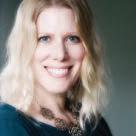
39 NADmag | Fall 2021
8630 Fenton Street, Ste. 820 Silver Spring, MD 20910
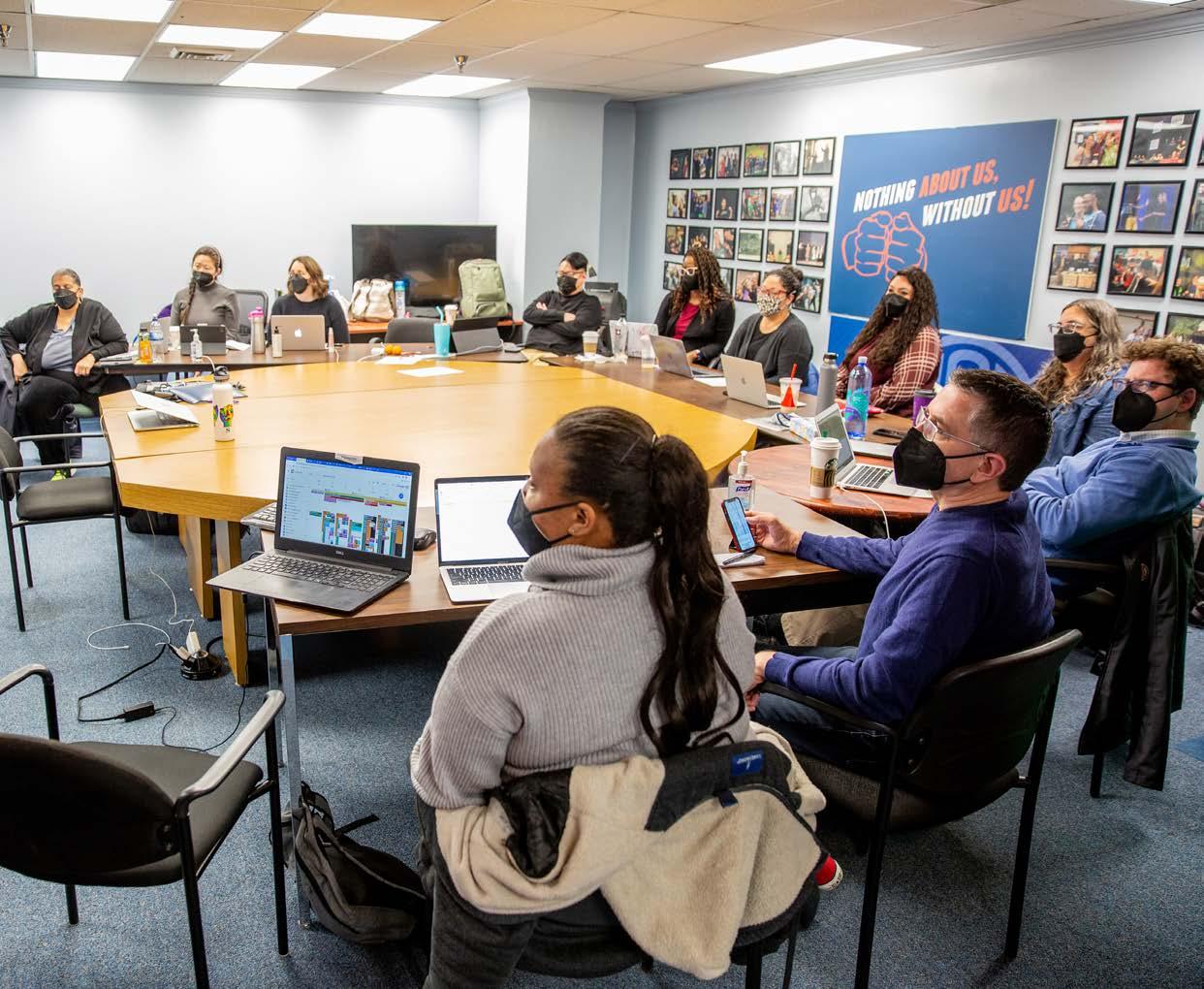 The NAD Board meet in person for the first time in two years at the NAD Headquarters in January 2022.
The NAD Board meet in person for the first time in two years at the NAD Headquarters in January 2022.

























































 Ariel Baker-Gibbs is a Deaf writer and graduate student living in the Bay Area.
“Maybe Here.” Sweat, Haus der Kunst, Munich, 2021. Inspired by bathroom wallpaper, “Maybe Here” makes the same kind of patterns when signed as we see it on the wall in small, repeated diagrams of hands going up and down or around in circles, labeled “maybe” and “here.”
“Captioning the City.” Manchester International Festival, UK. 2021. This caption is “the sound of BSL asking why there isn’t one universal spoken language,” along the top of a red brick building, which is the Manchester Deaf Centre.
2021 Max Geuter for Haus der Kunst
2021 Lee Baxter for Manchester International Festival
Ariel Baker-Gibbs is a Deaf writer and graduate student living in the Bay Area.
“Maybe Here.” Sweat, Haus der Kunst, Munich, 2021. Inspired by bathroom wallpaper, “Maybe Here” makes the same kind of patterns when signed as we see it on the wall in small, repeated diagrams of hands going up and down or around in circles, labeled “maybe” and “here.”
“Captioning the City.” Manchester International Festival, UK. 2021. This caption is “the sound of BSL asking why there isn’t one universal spoken language,” along the top of a red brick building, which is the Manchester Deaf Centre.
2021 Max Geuter for Haus der Kunst
2021 Lee Baxter for Manchester International Festival

















 Chanel Gleicher Bonheyo is the Director of Youth Programs at the NAD.
The front cover of Jr. NAD Deaf American Bulletin magazine, created in Spring 1971.
Chanel Gleicher Bonheyo is the Director of Youth Programs at the NAD.
The front cover of Jr. NAD Deaf American Bulletin magazine, created in Spring 1971.


 The NAD Board meet in person for the first time in two years at the NAD Headquarters in January 2022.
The NAD Board meet in person for the first time in two years at the NAD Headquarters in January 2022.